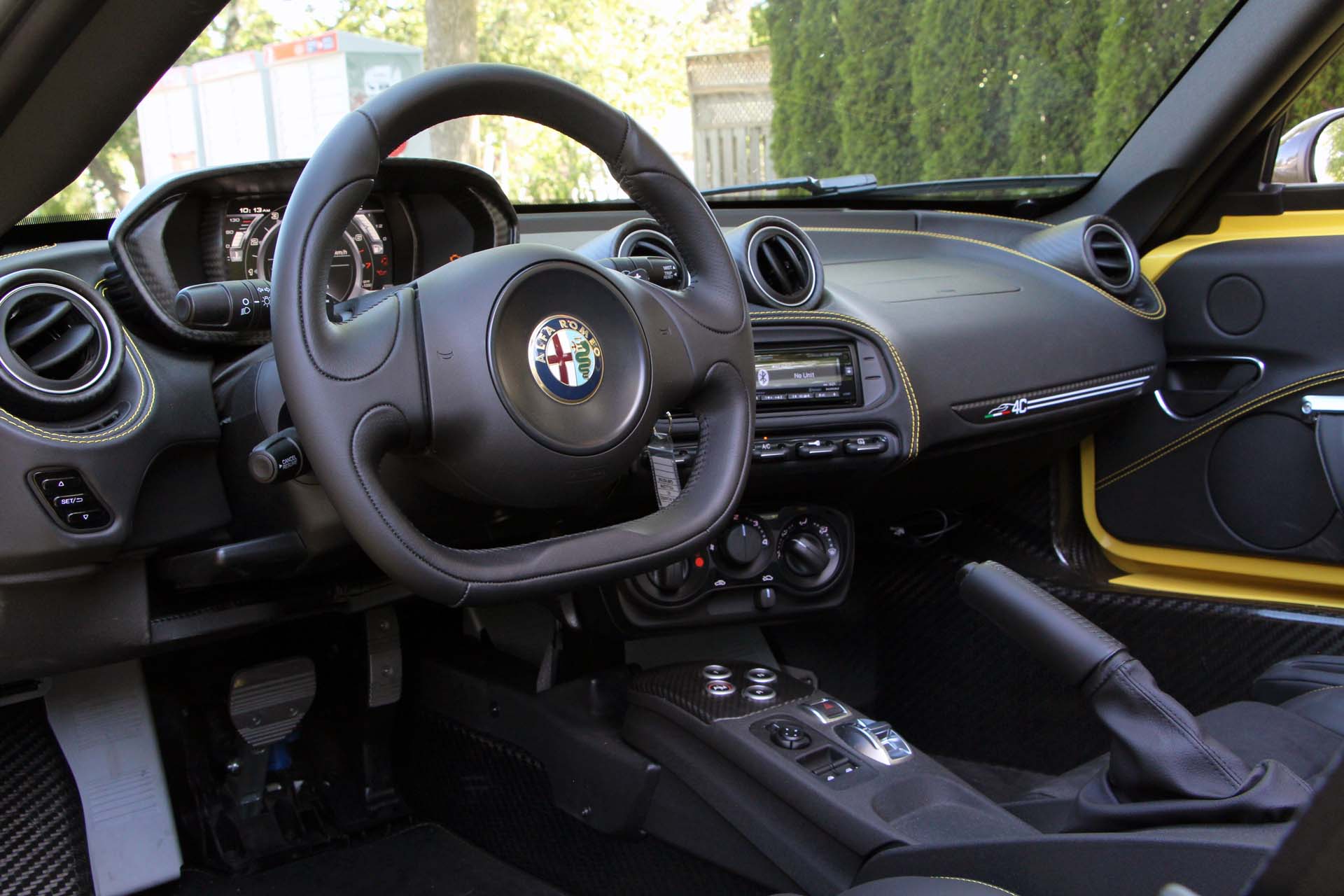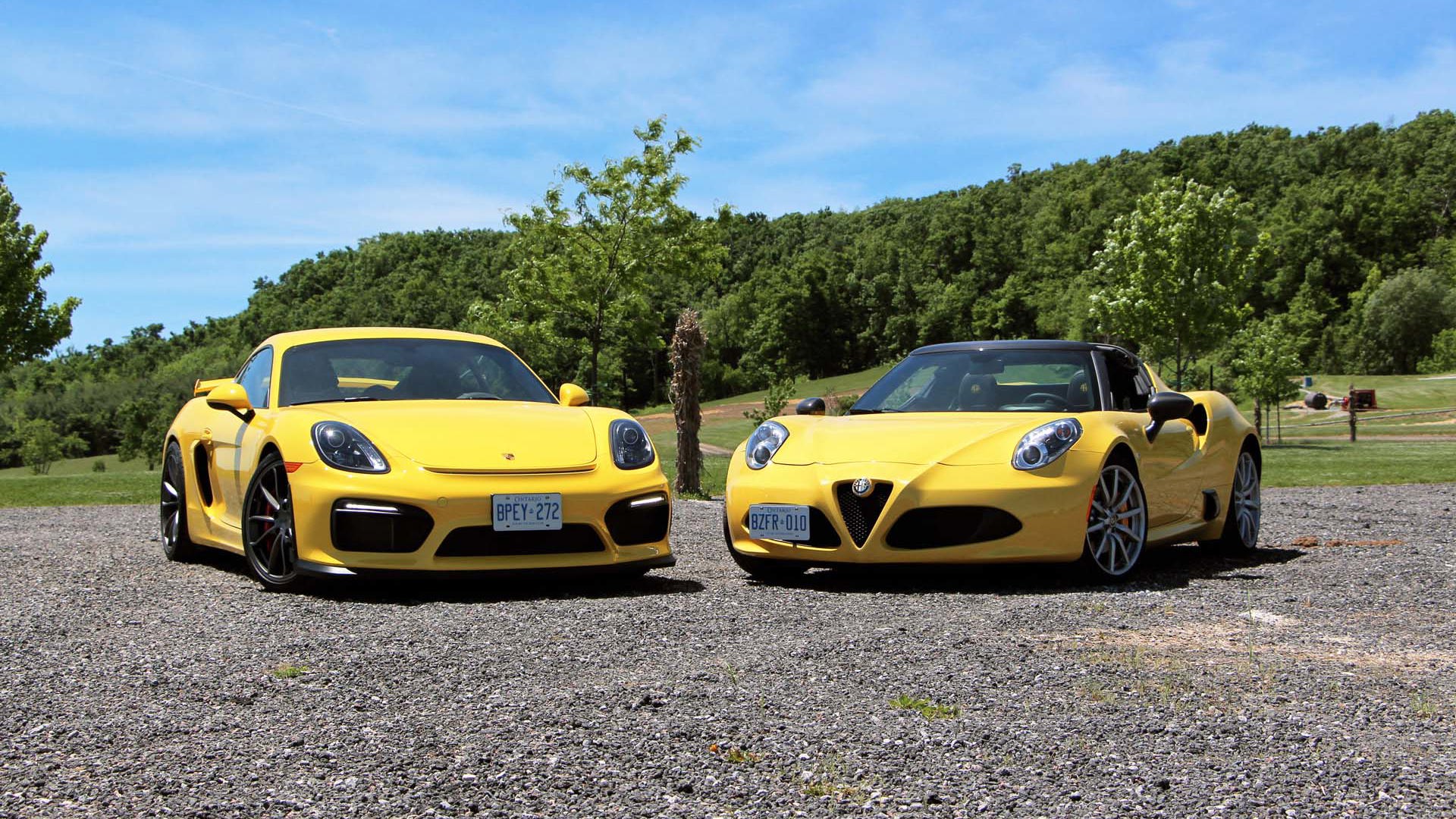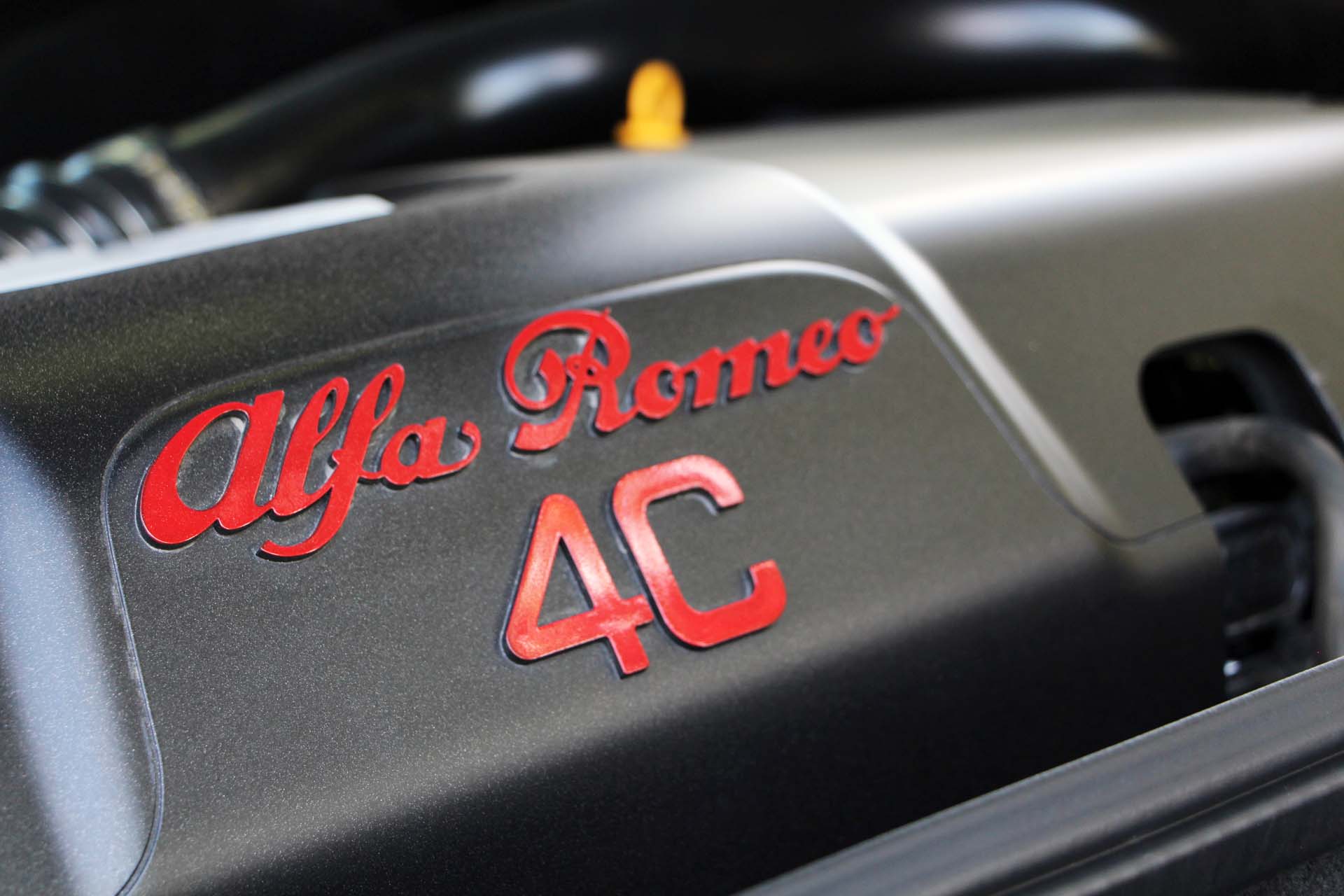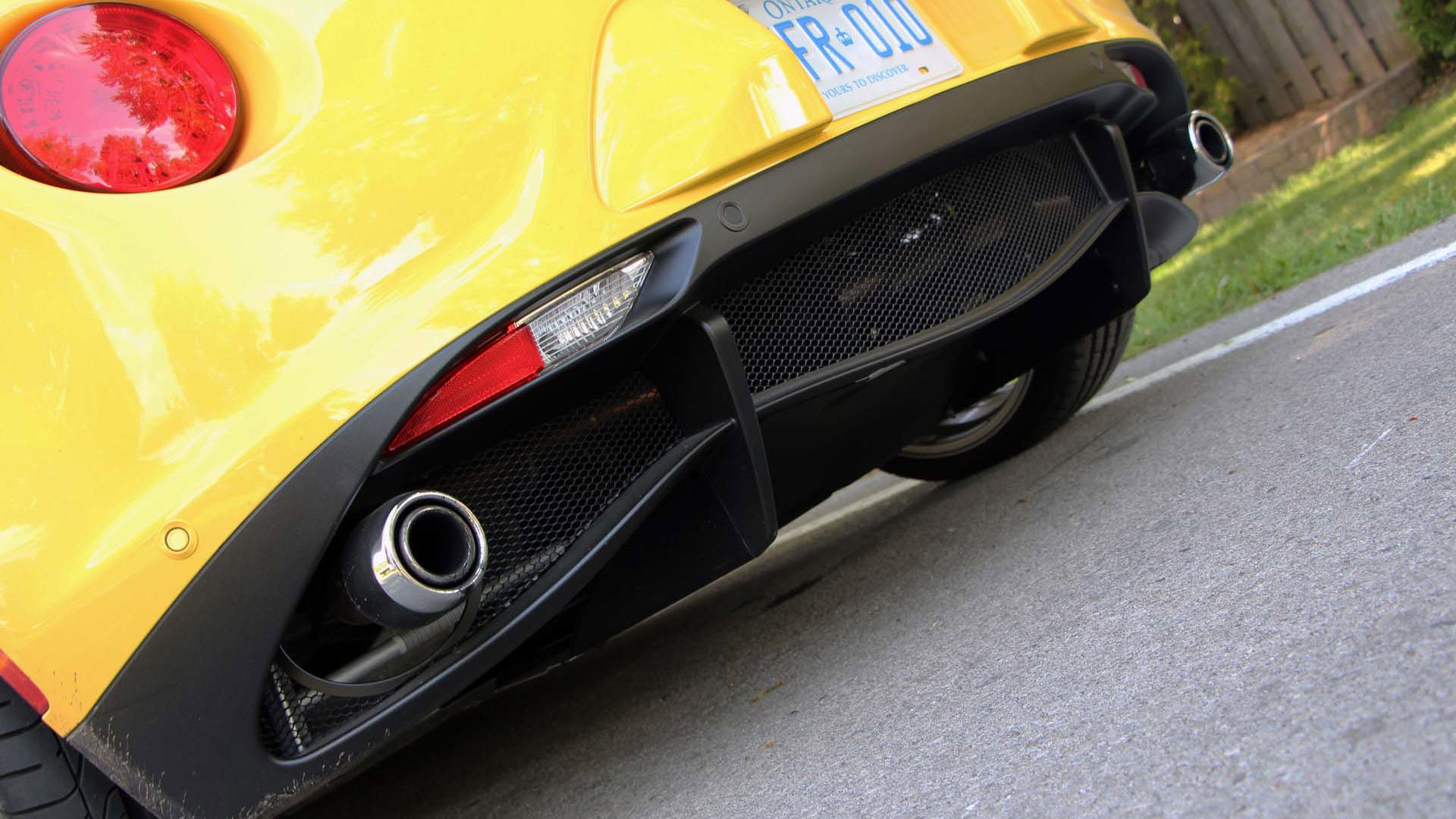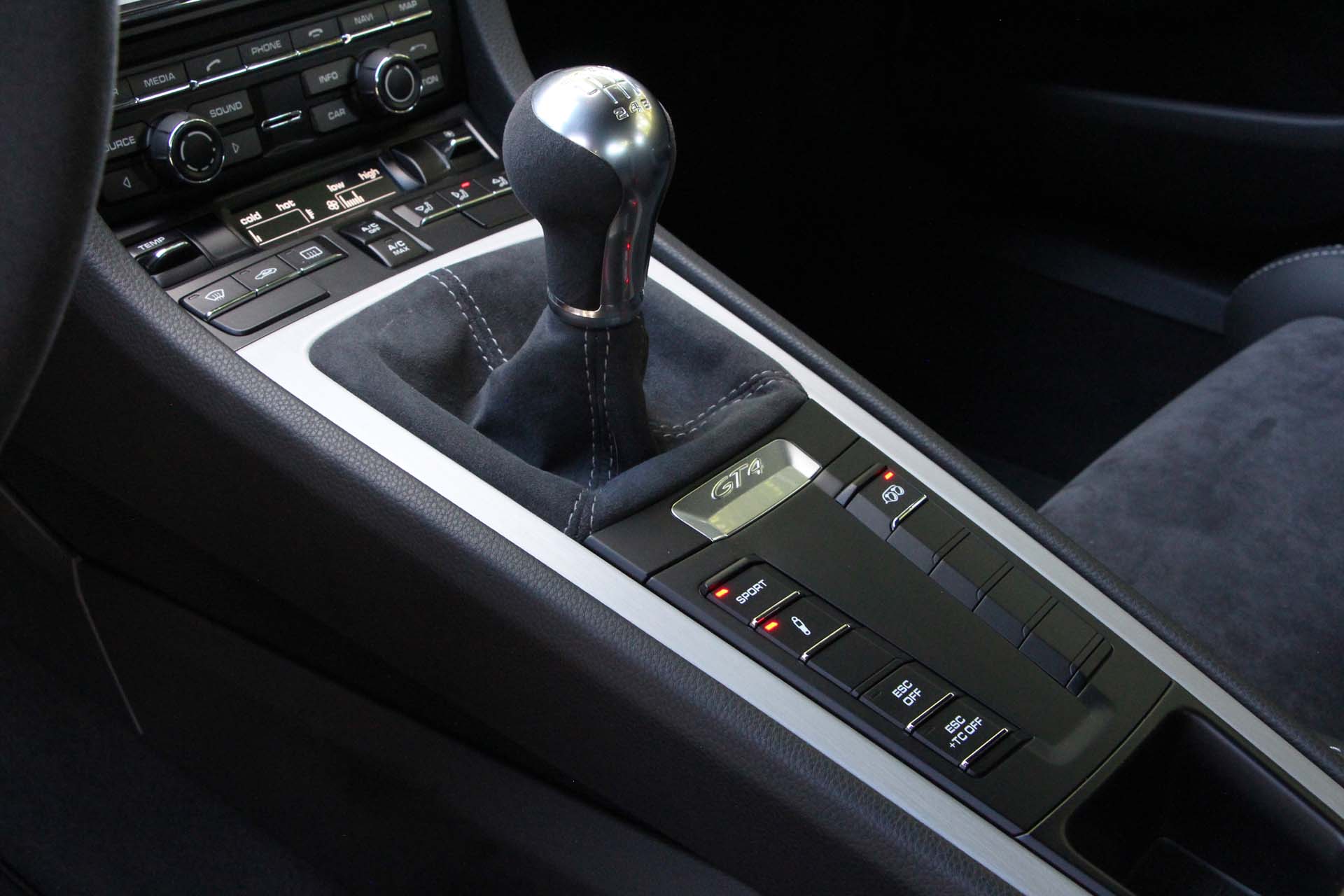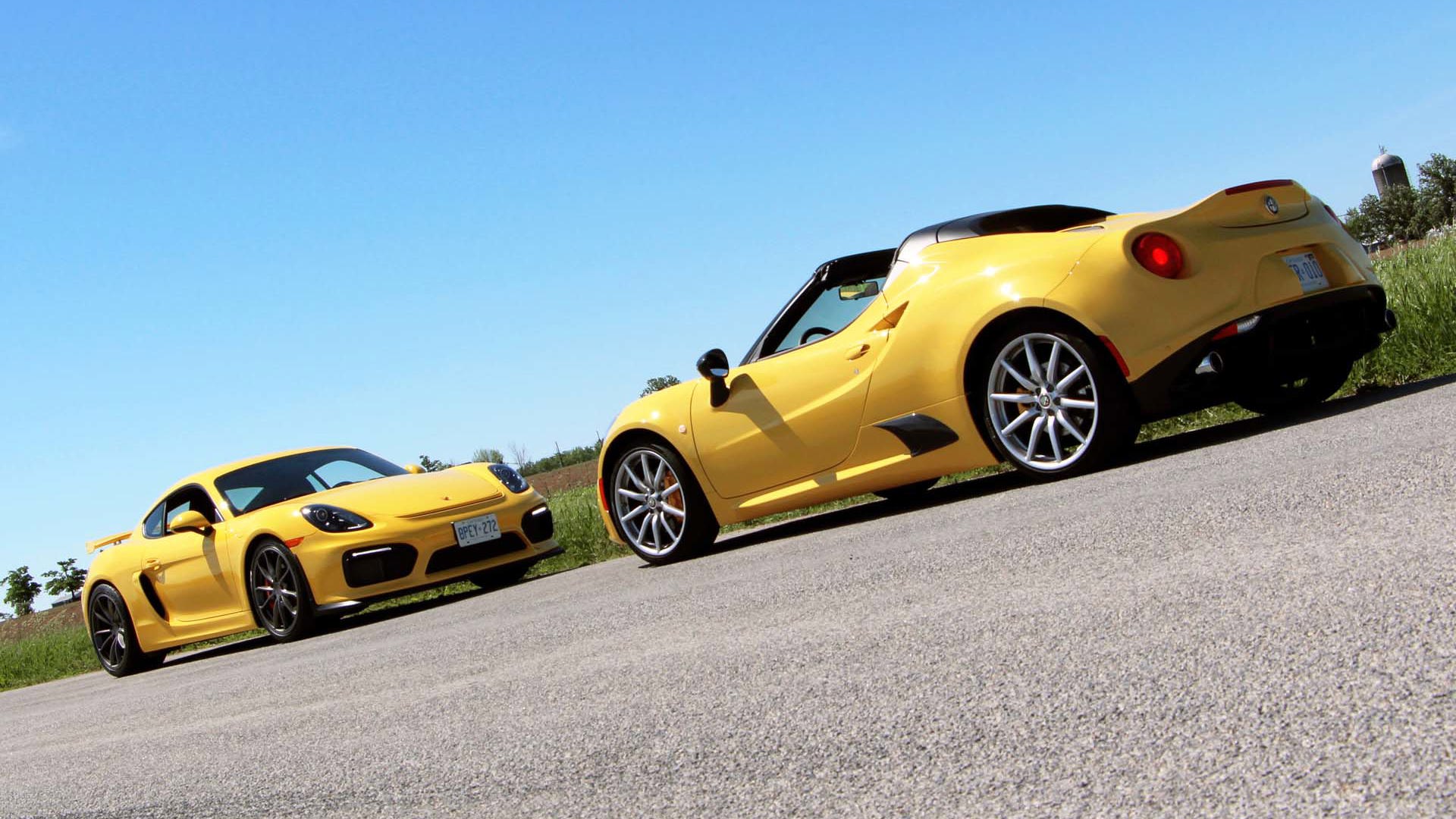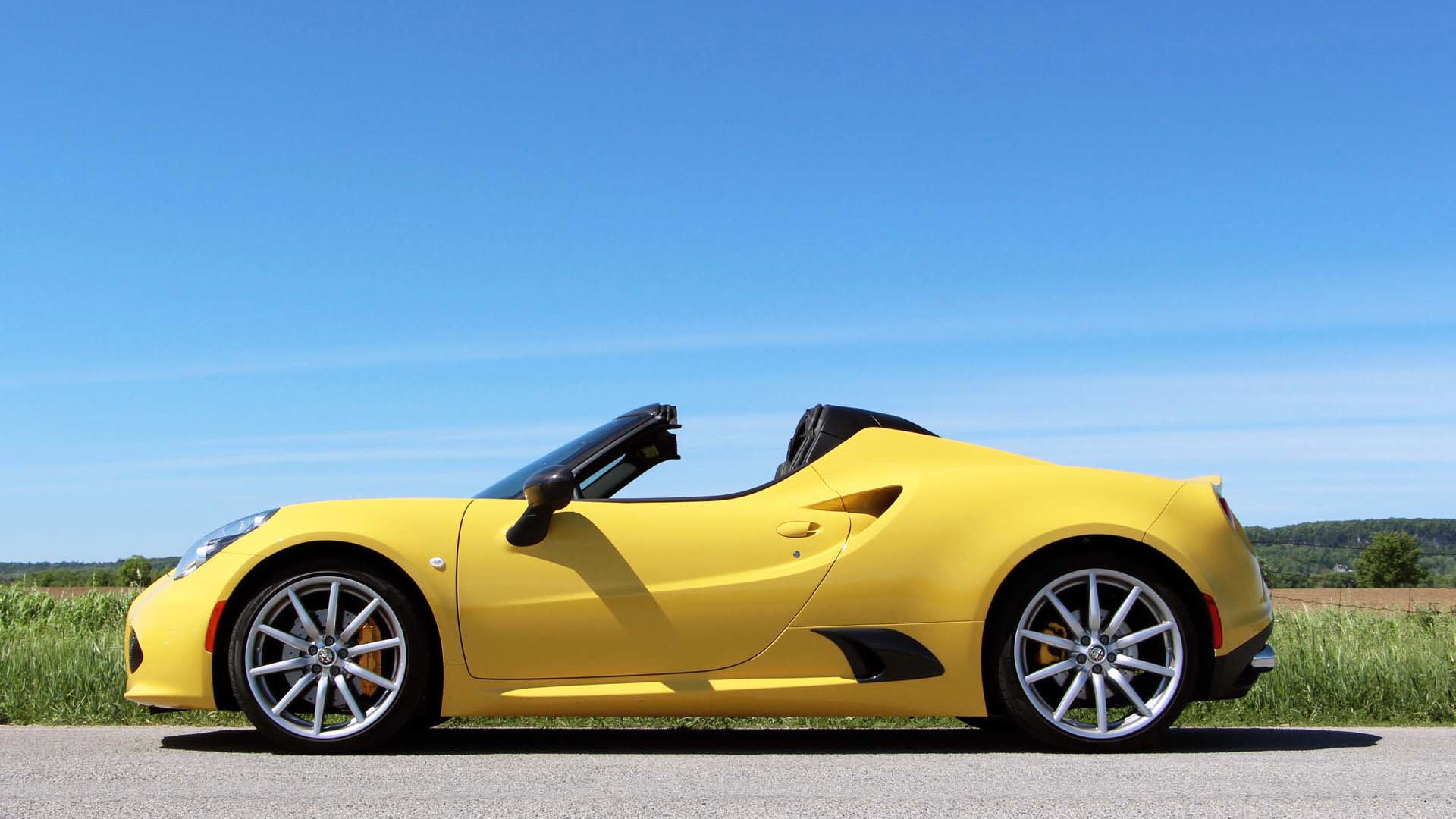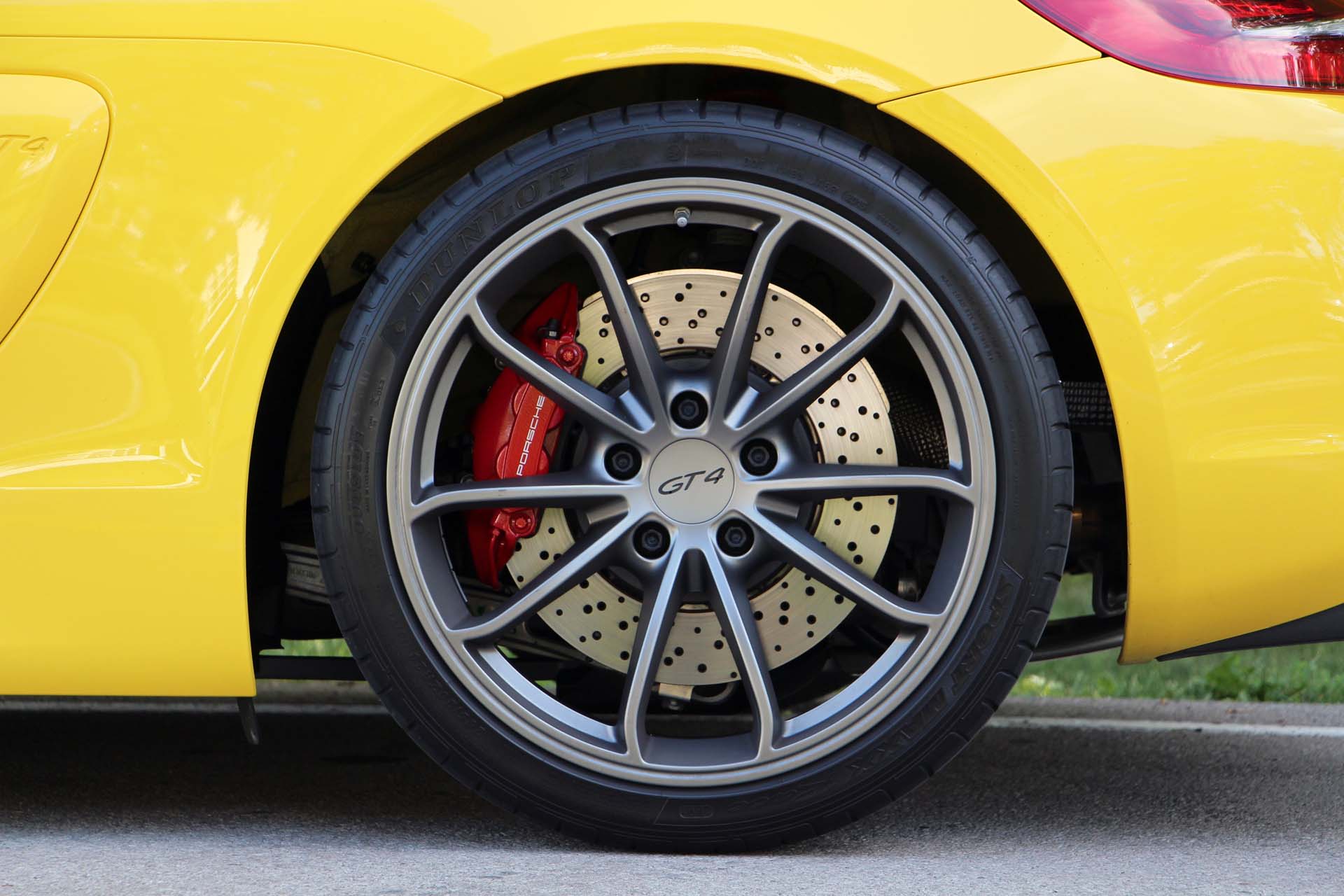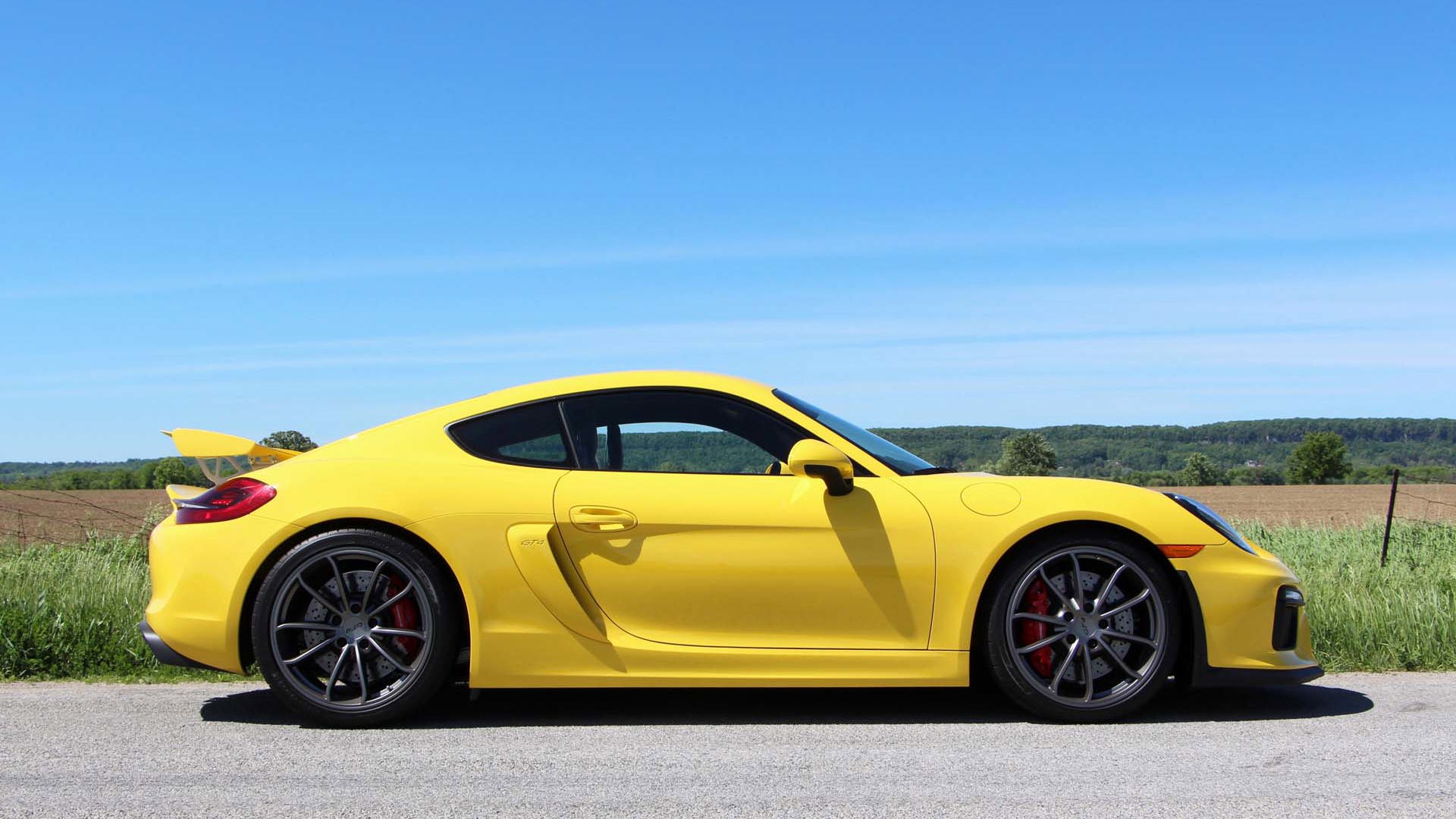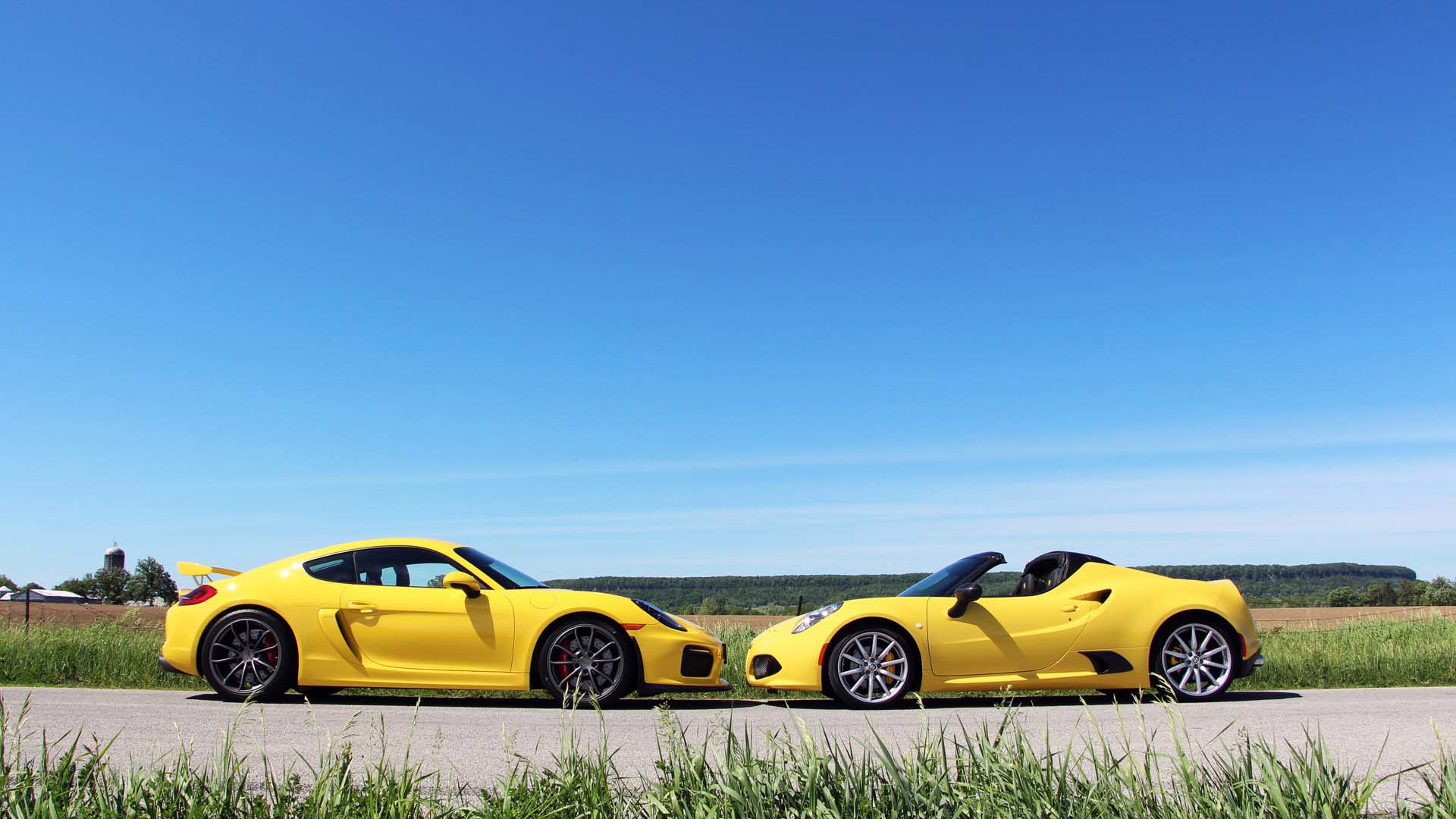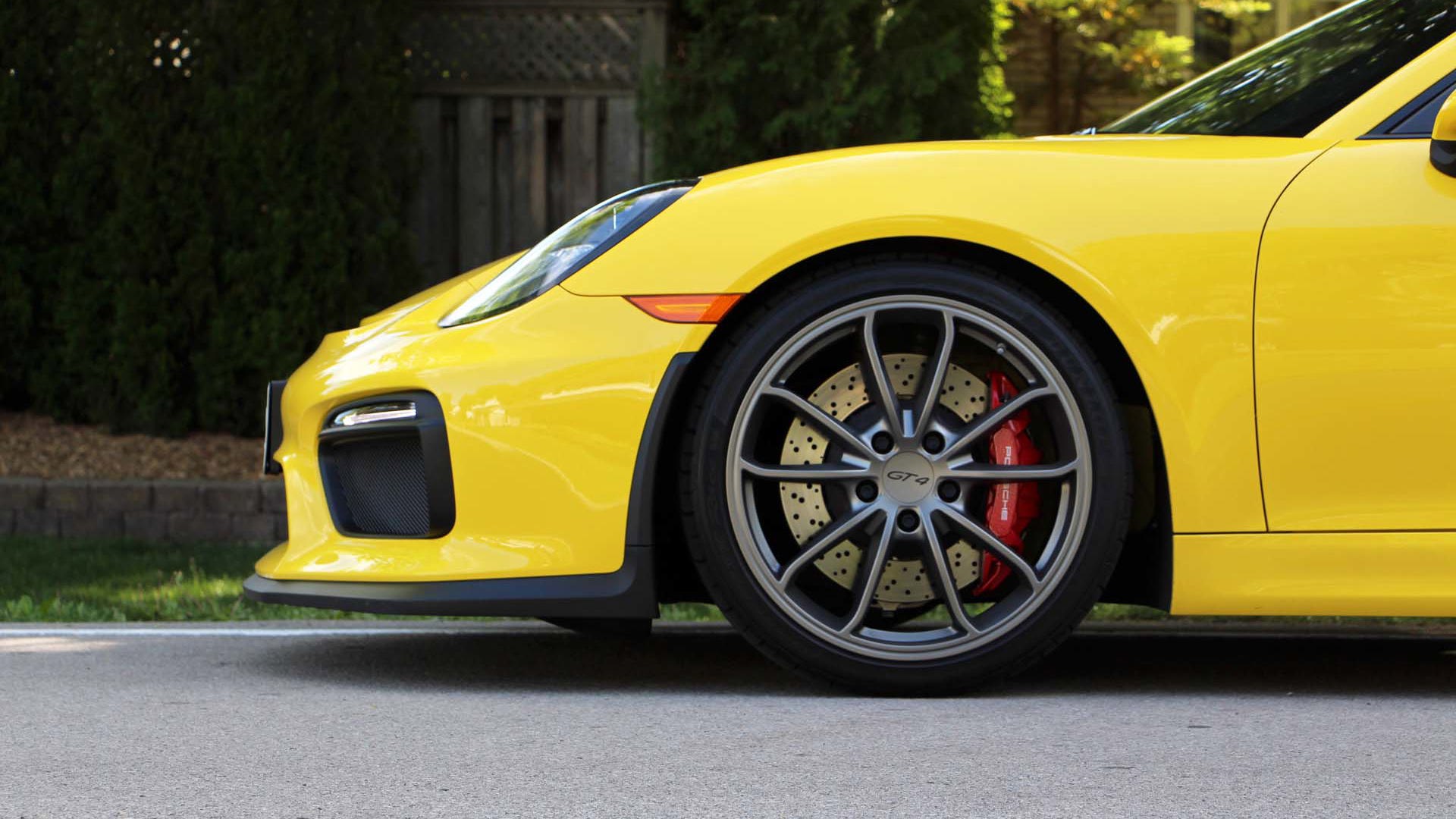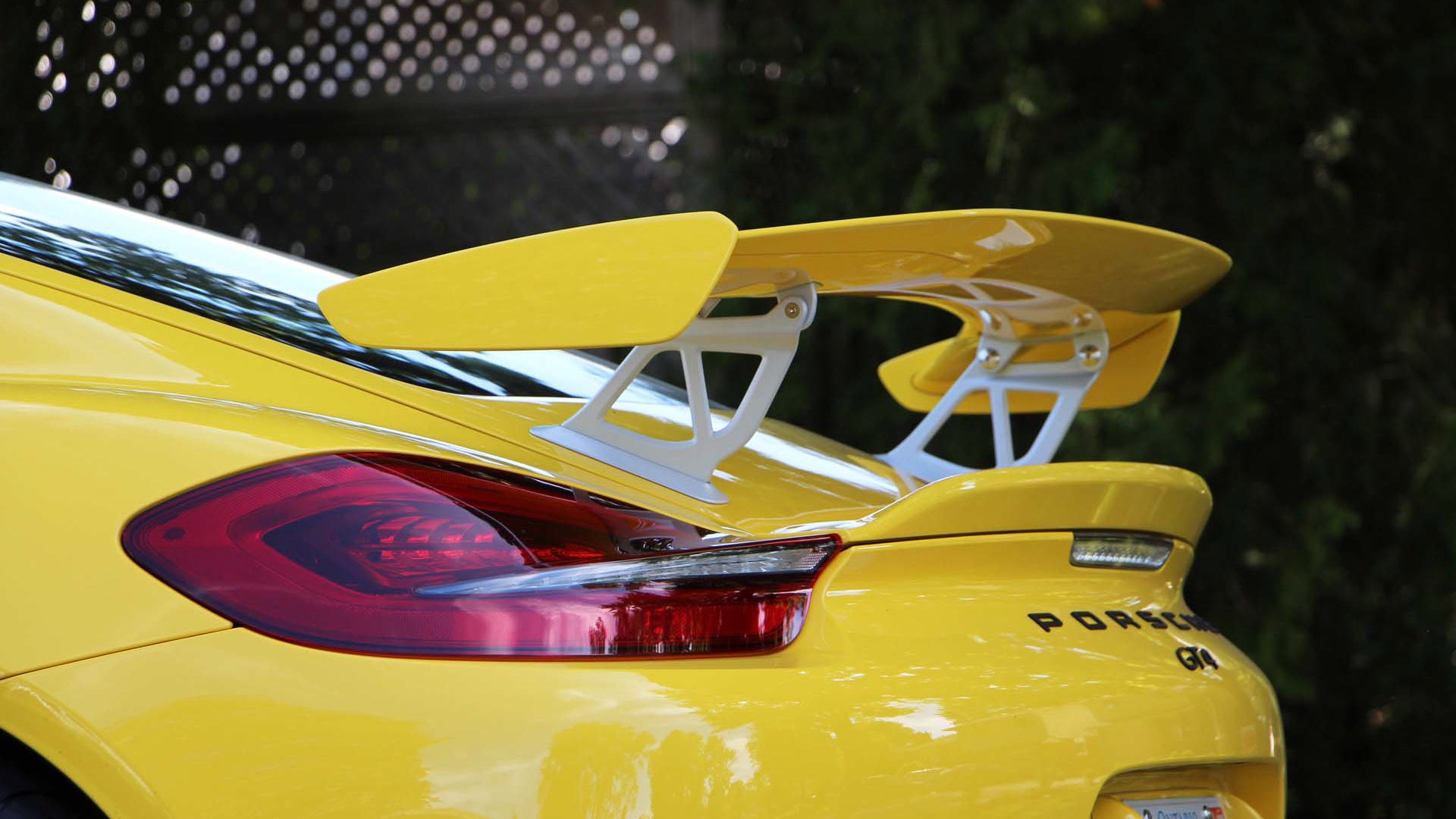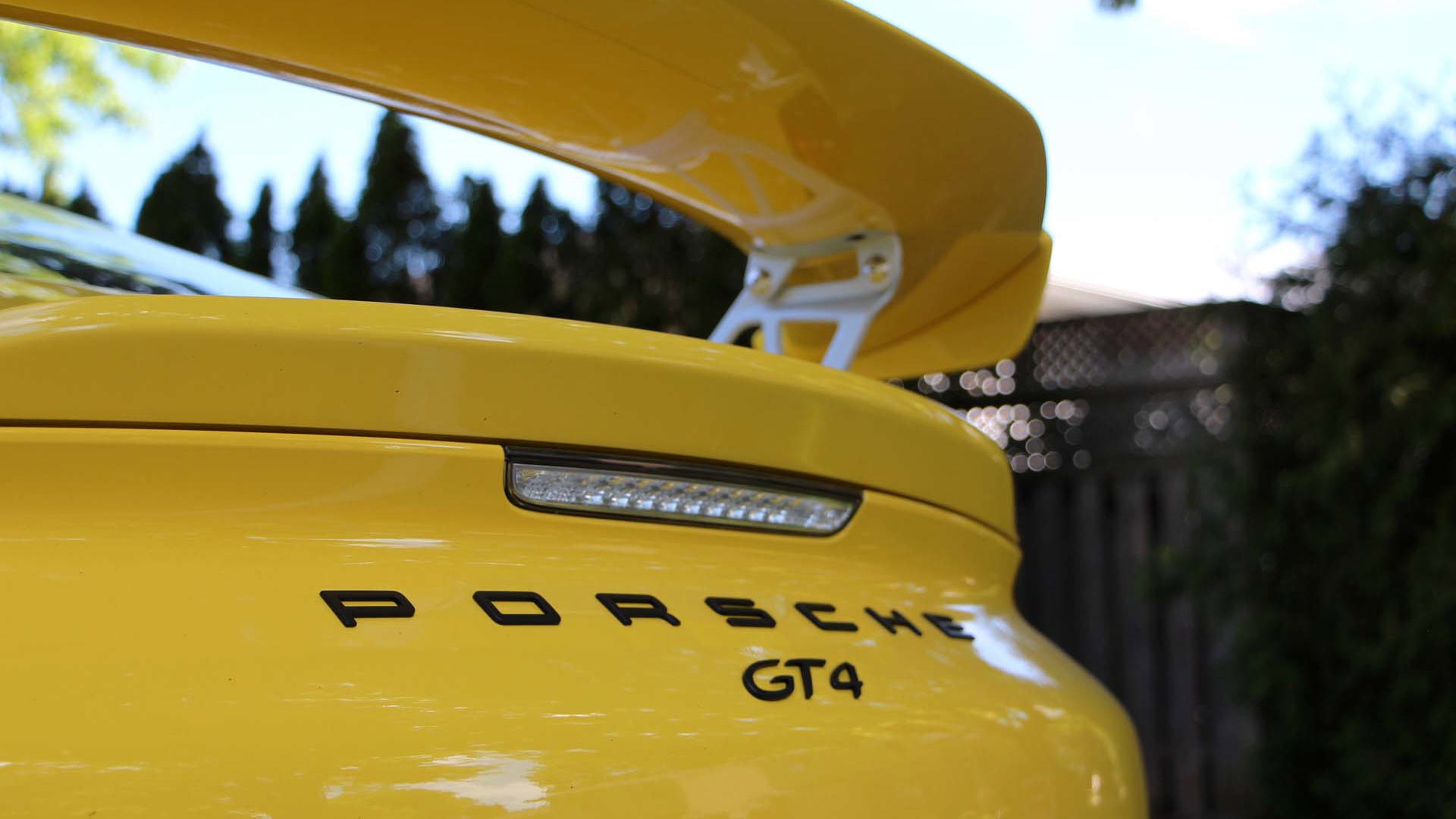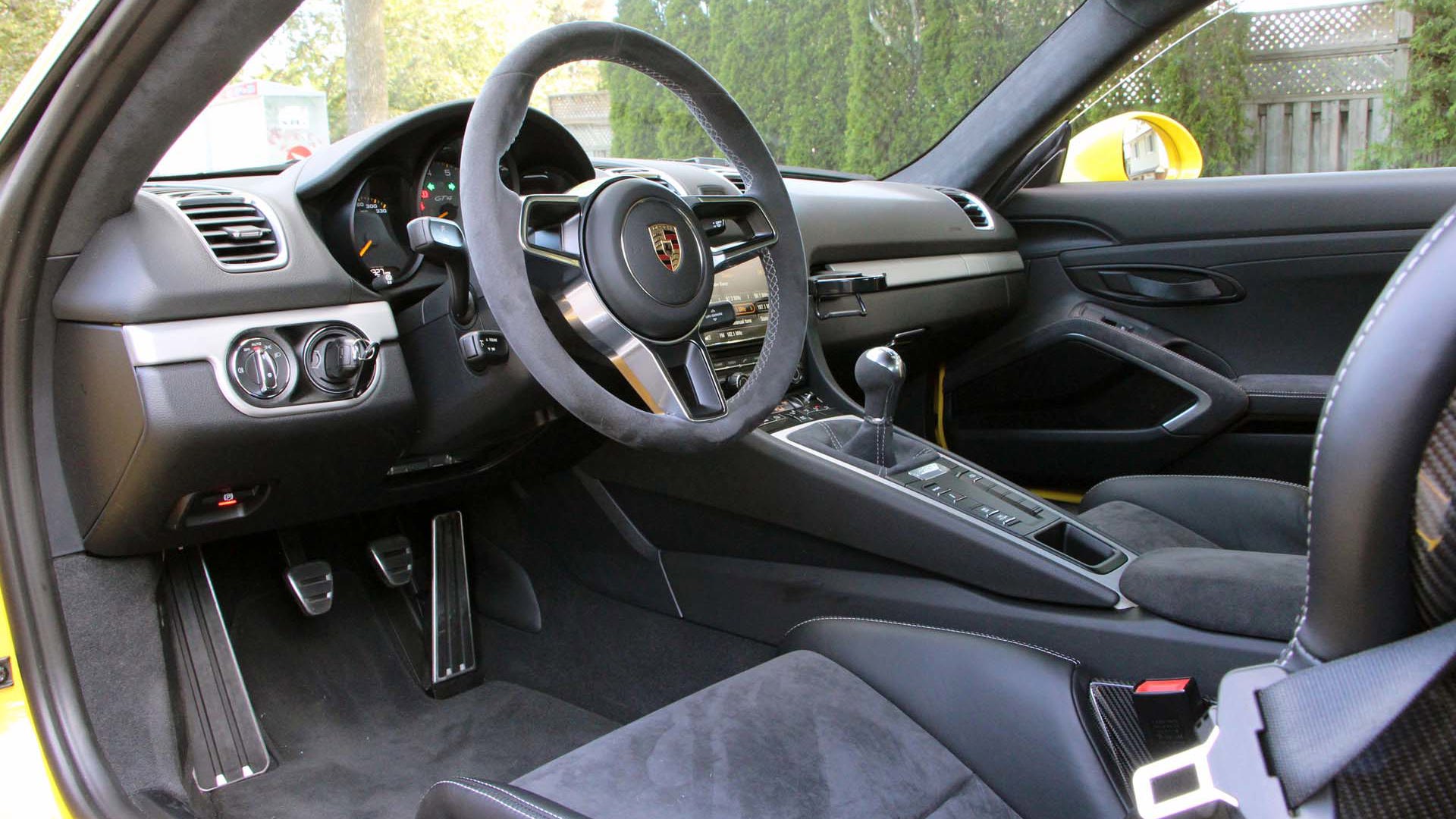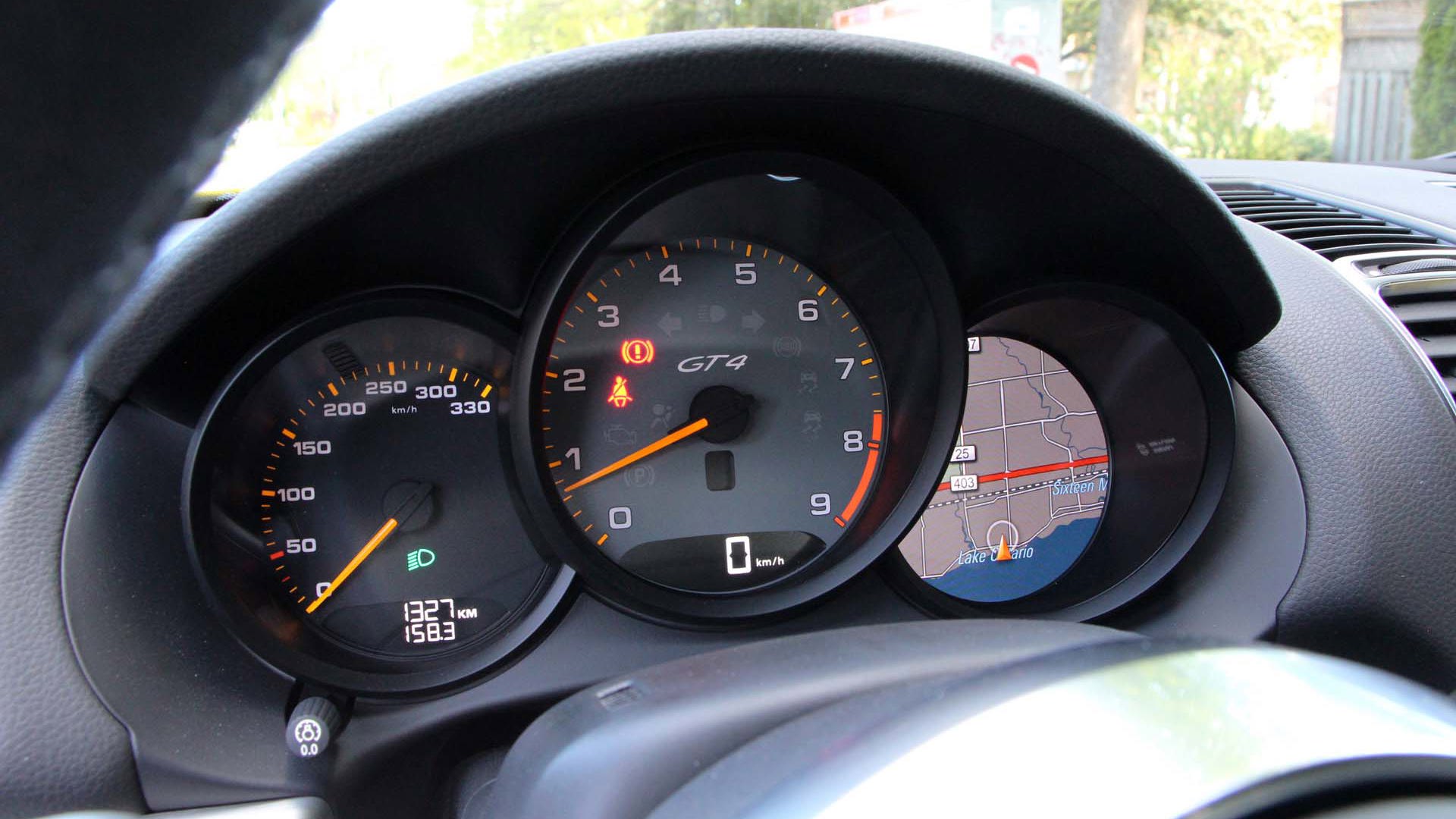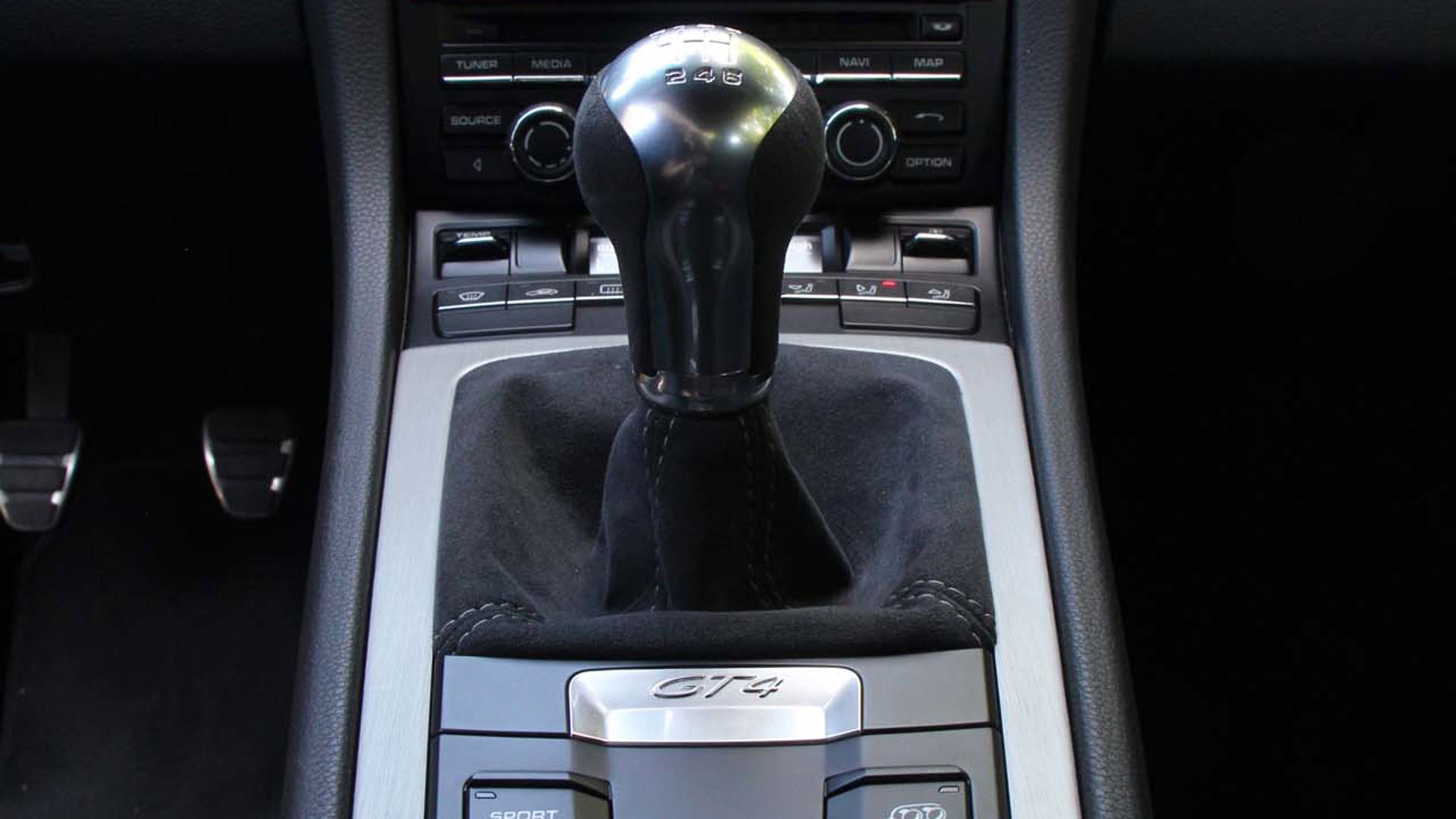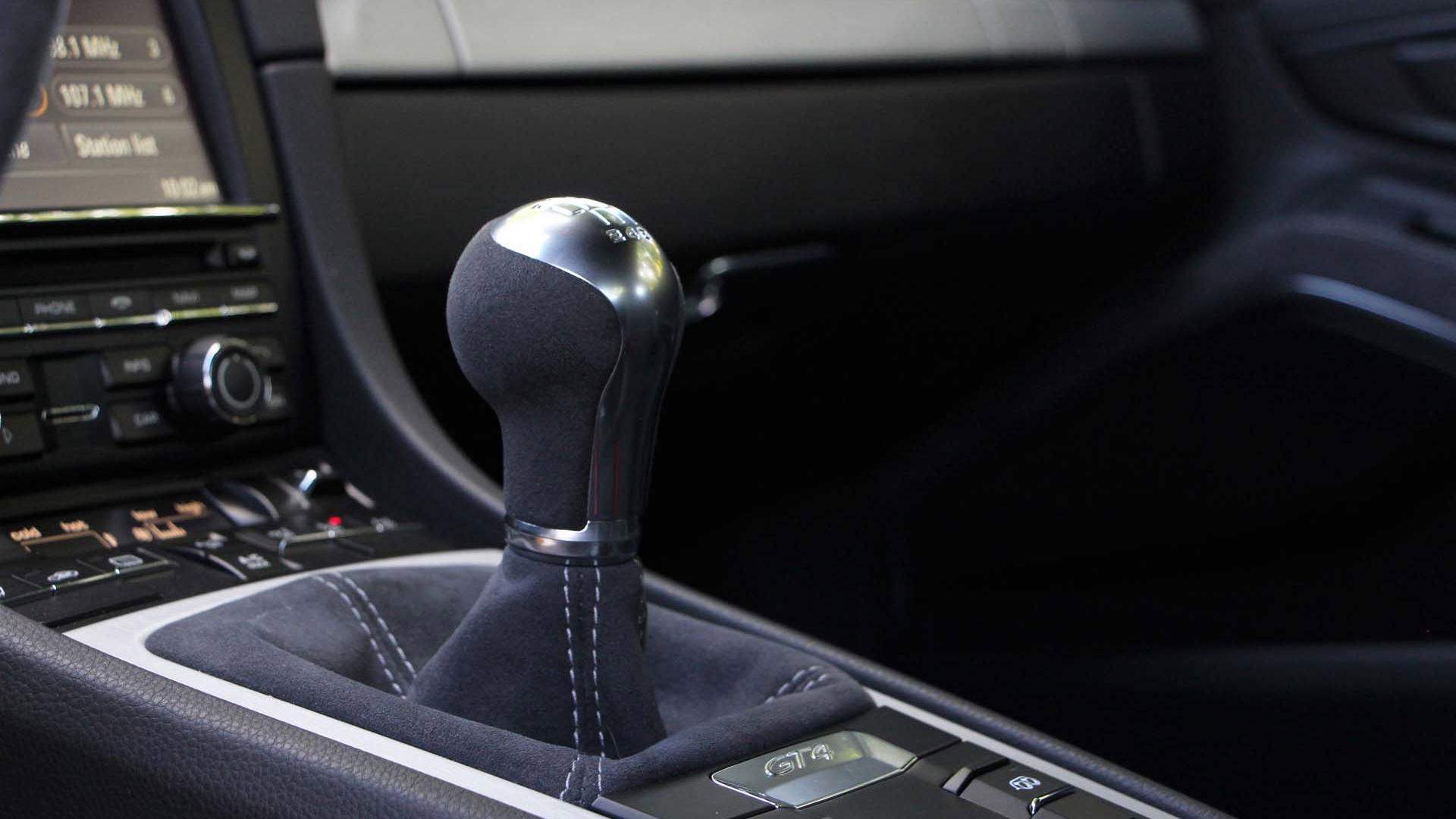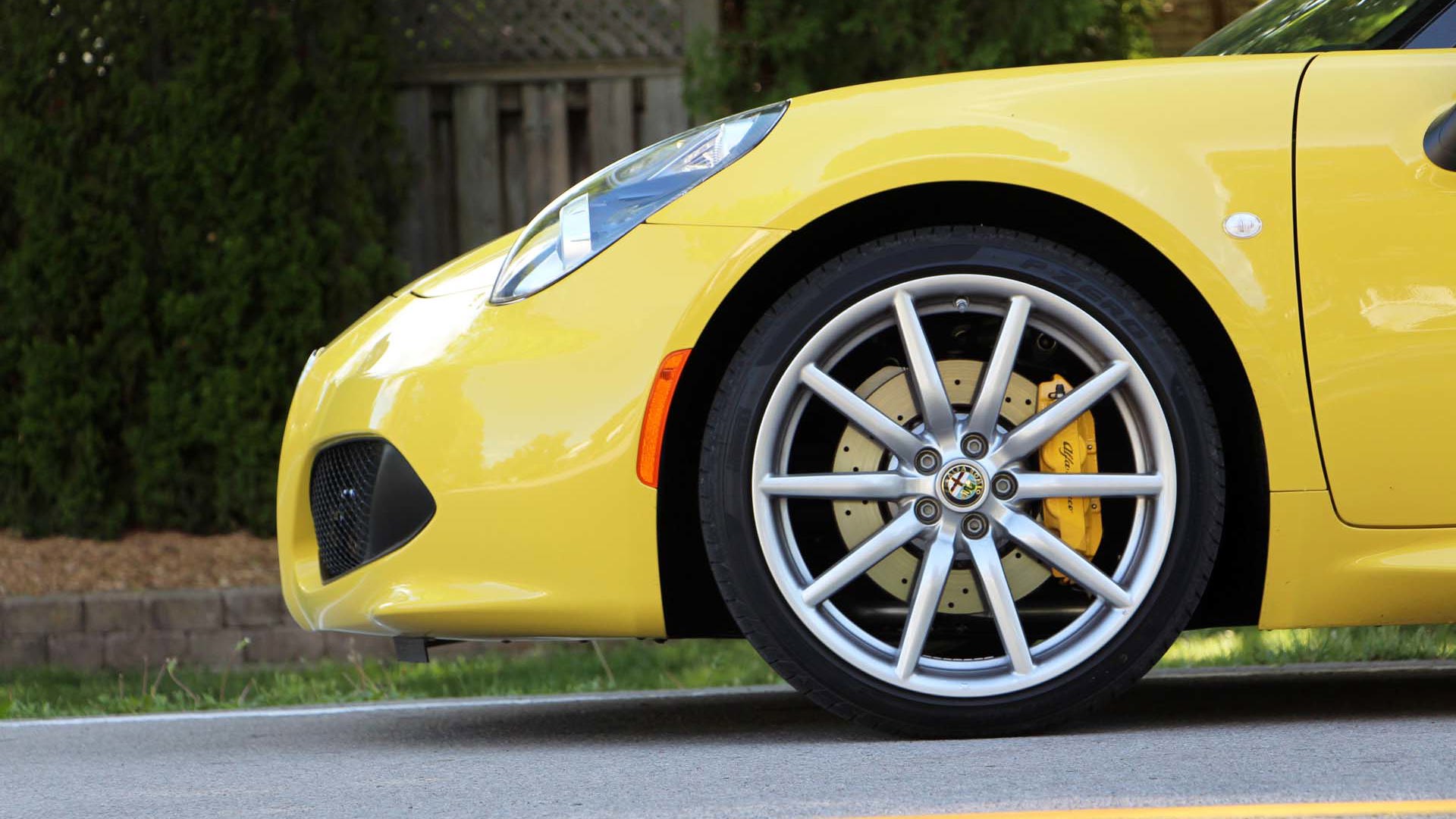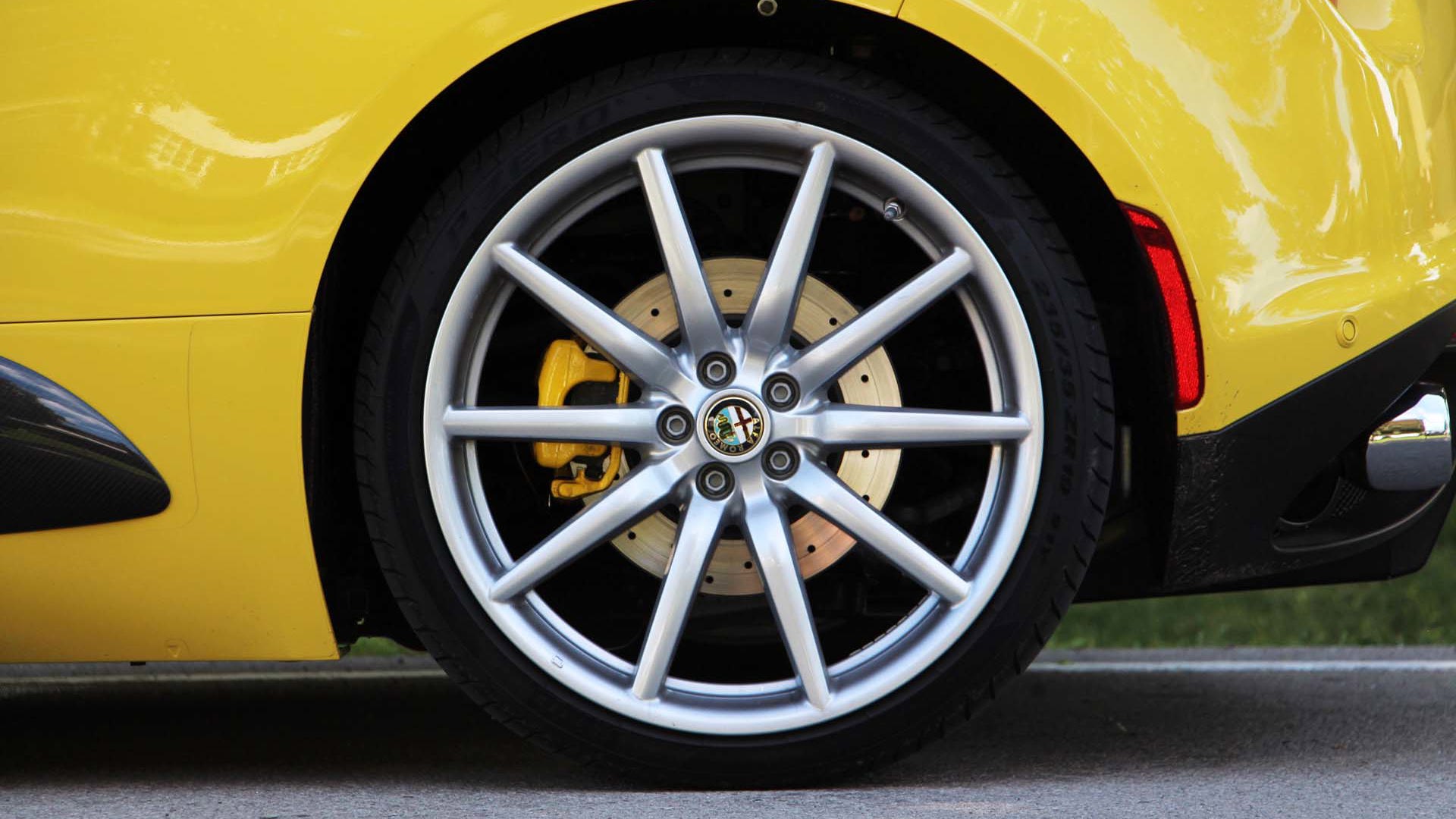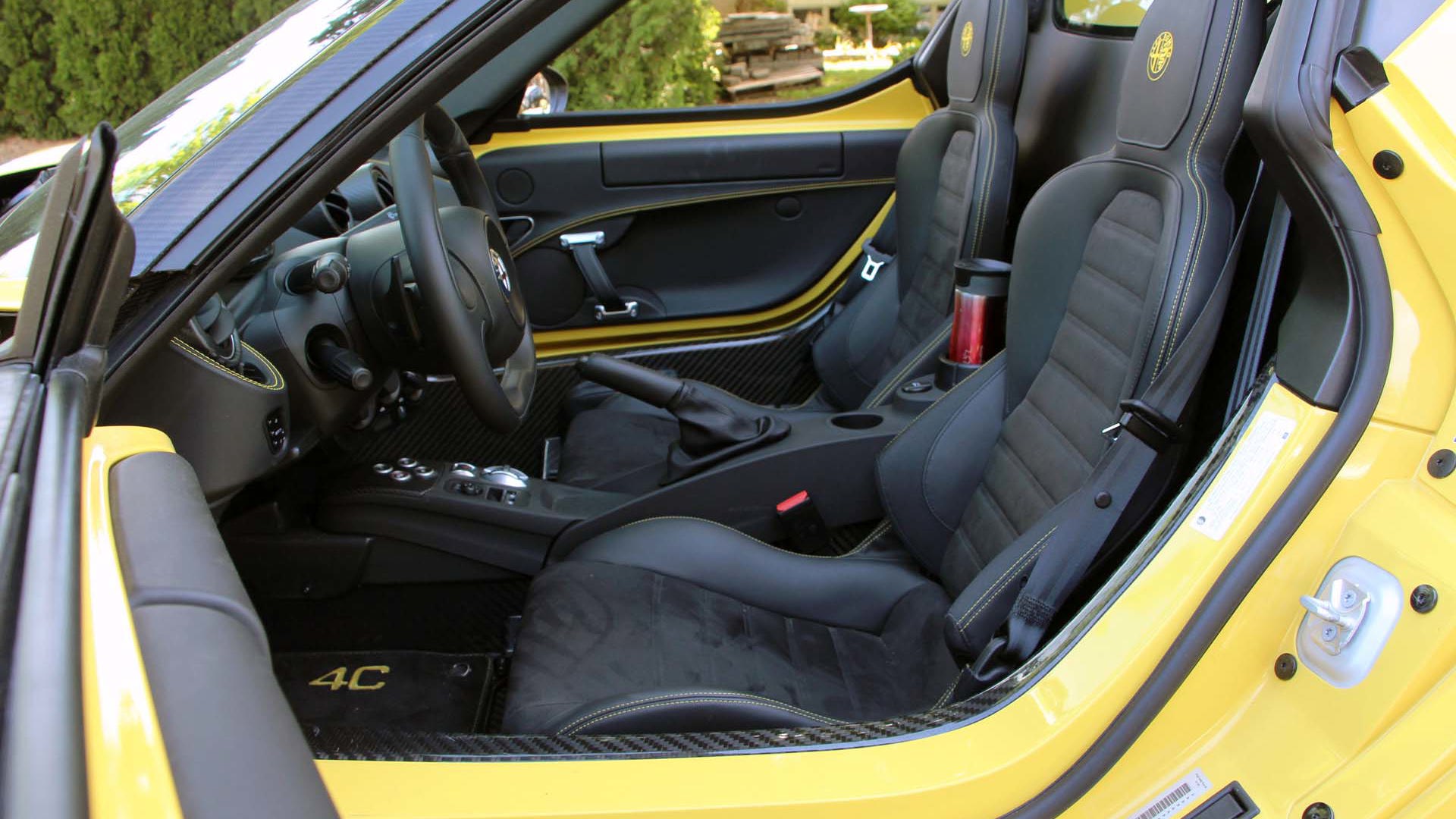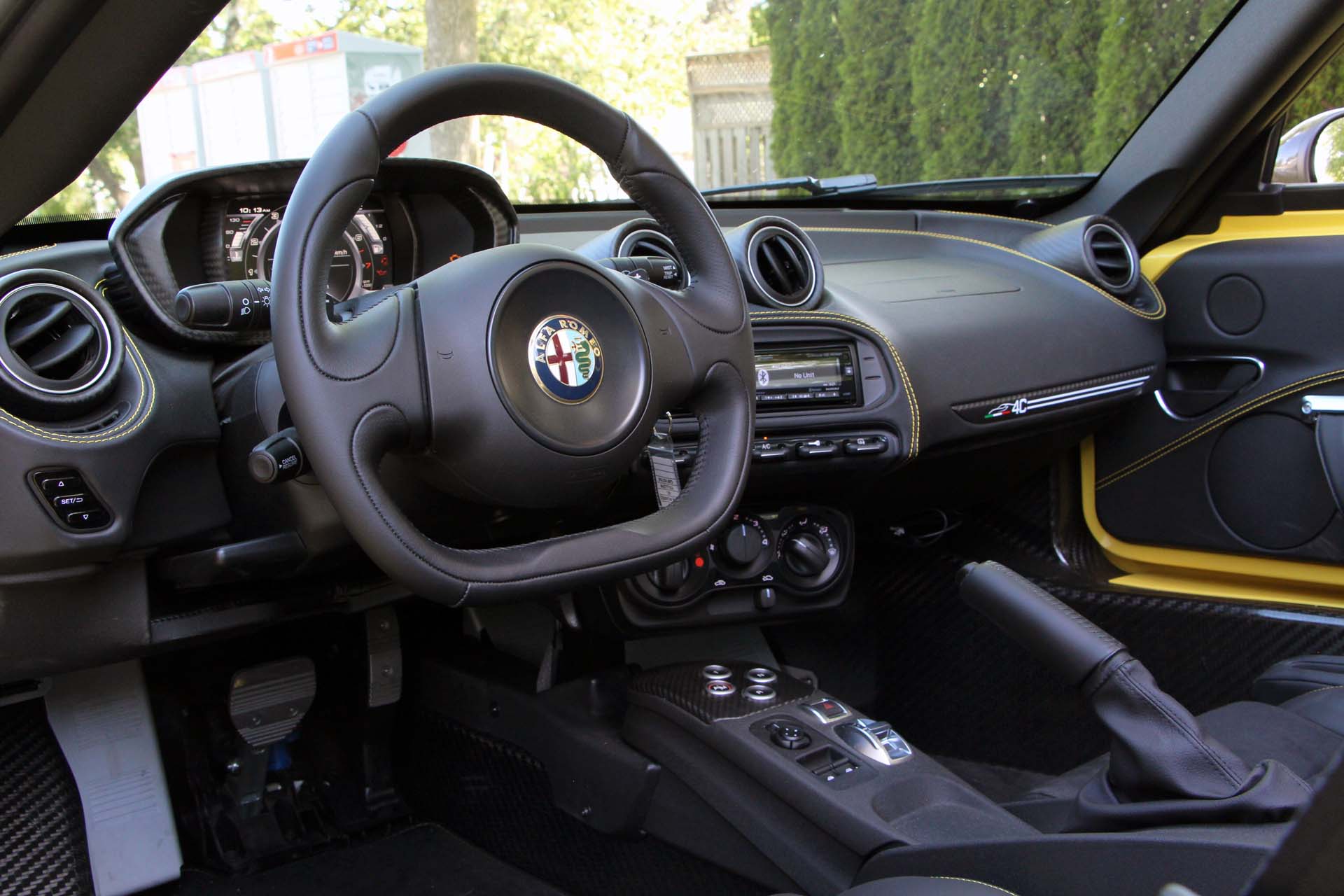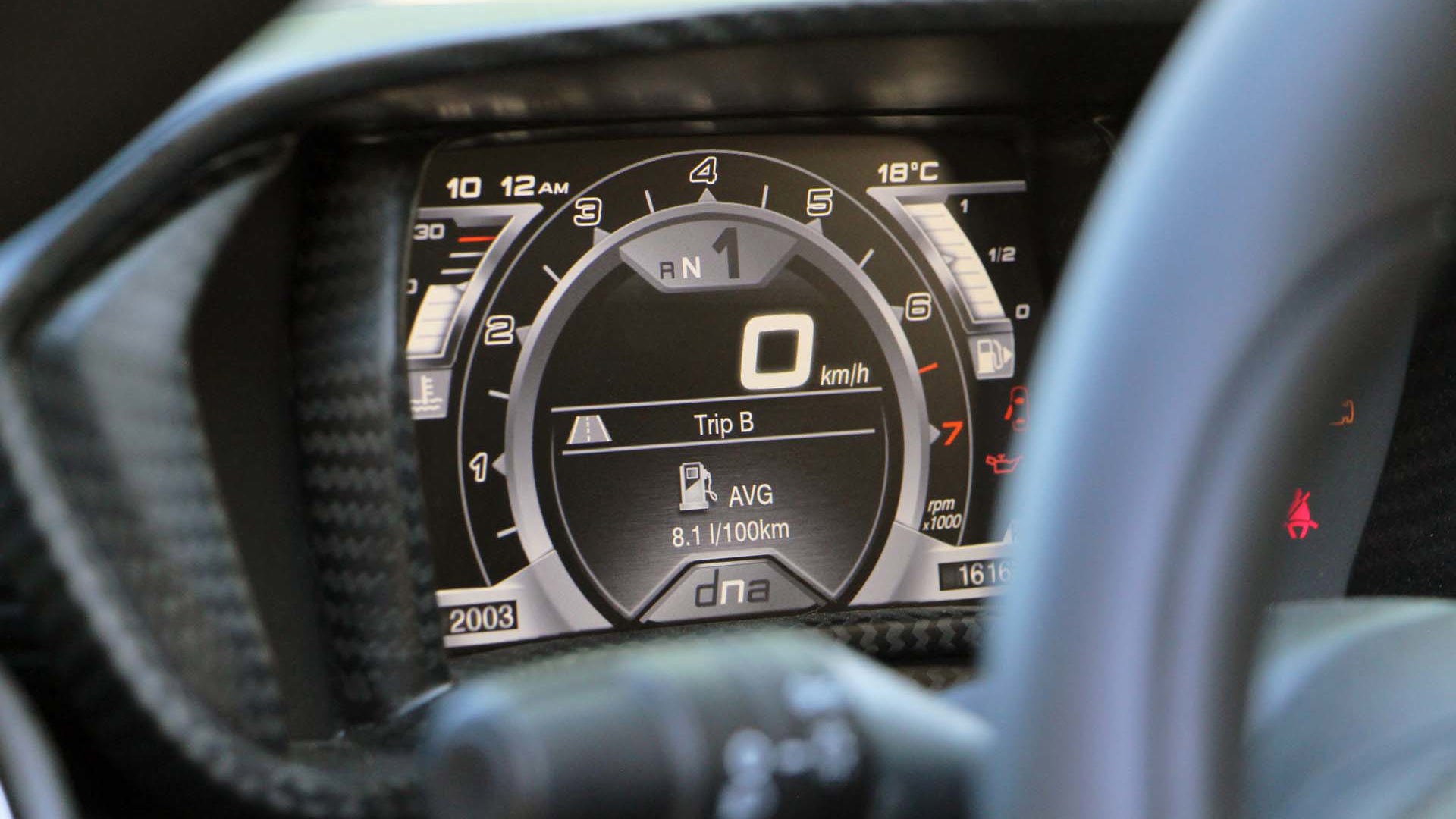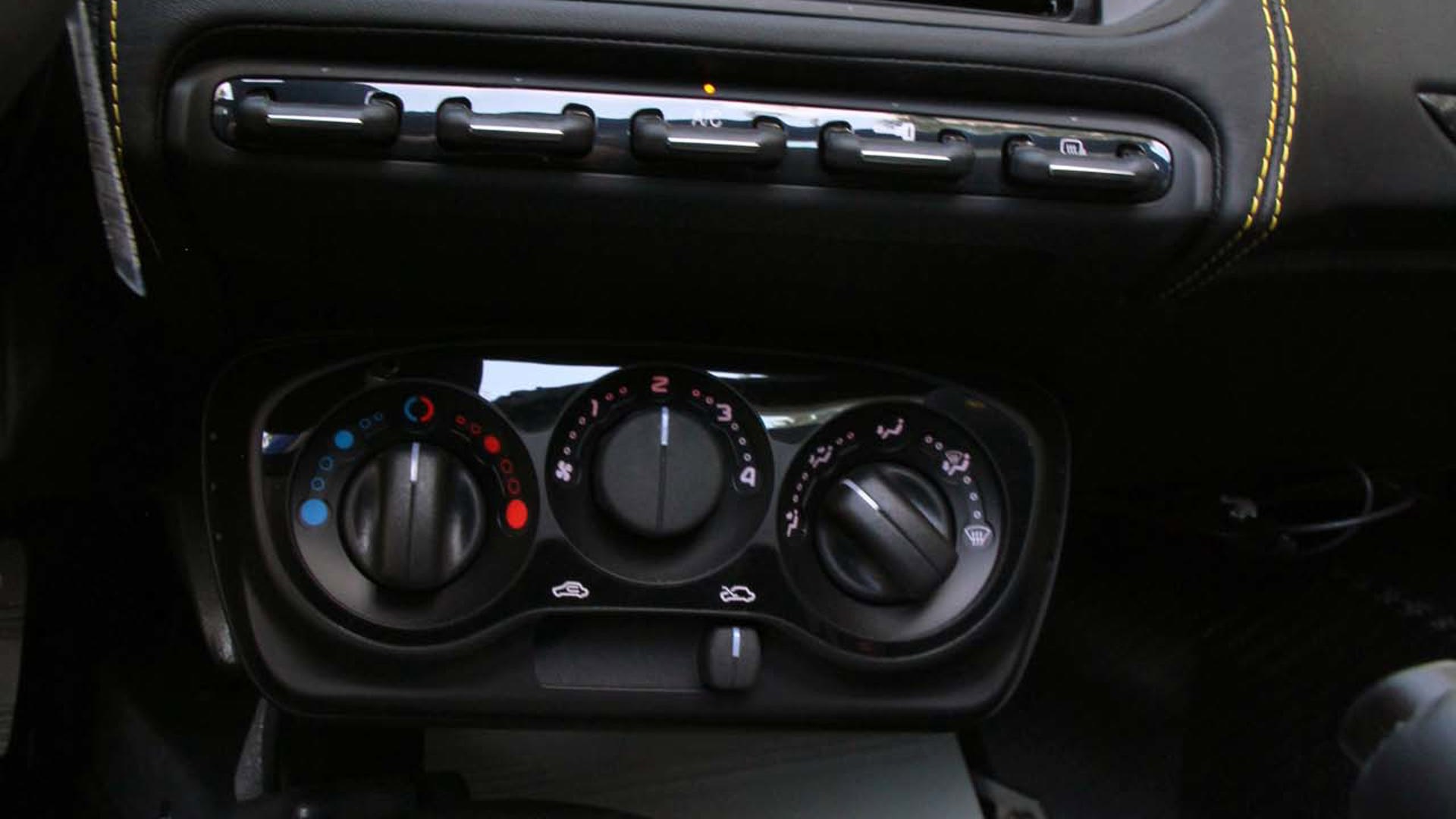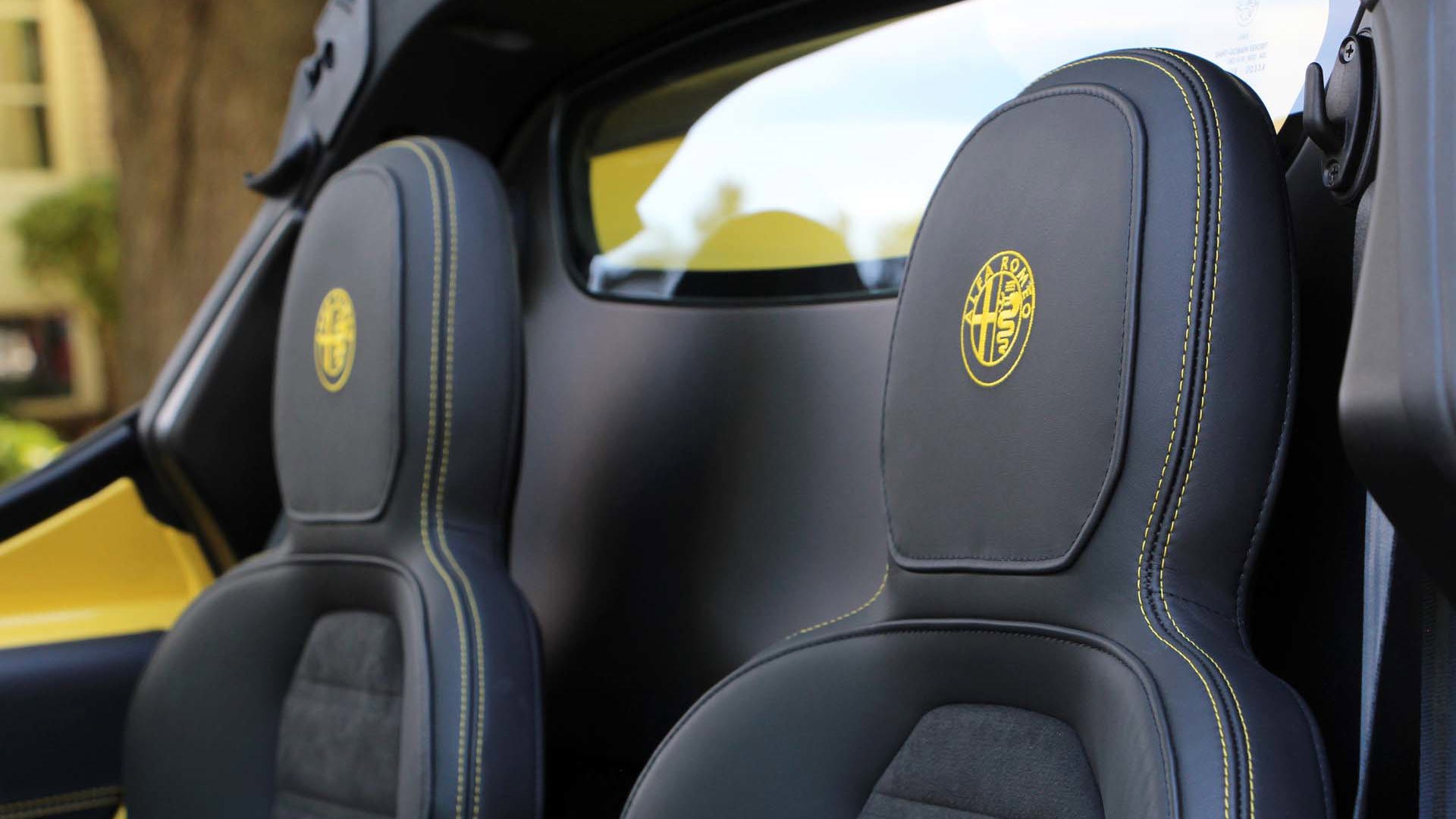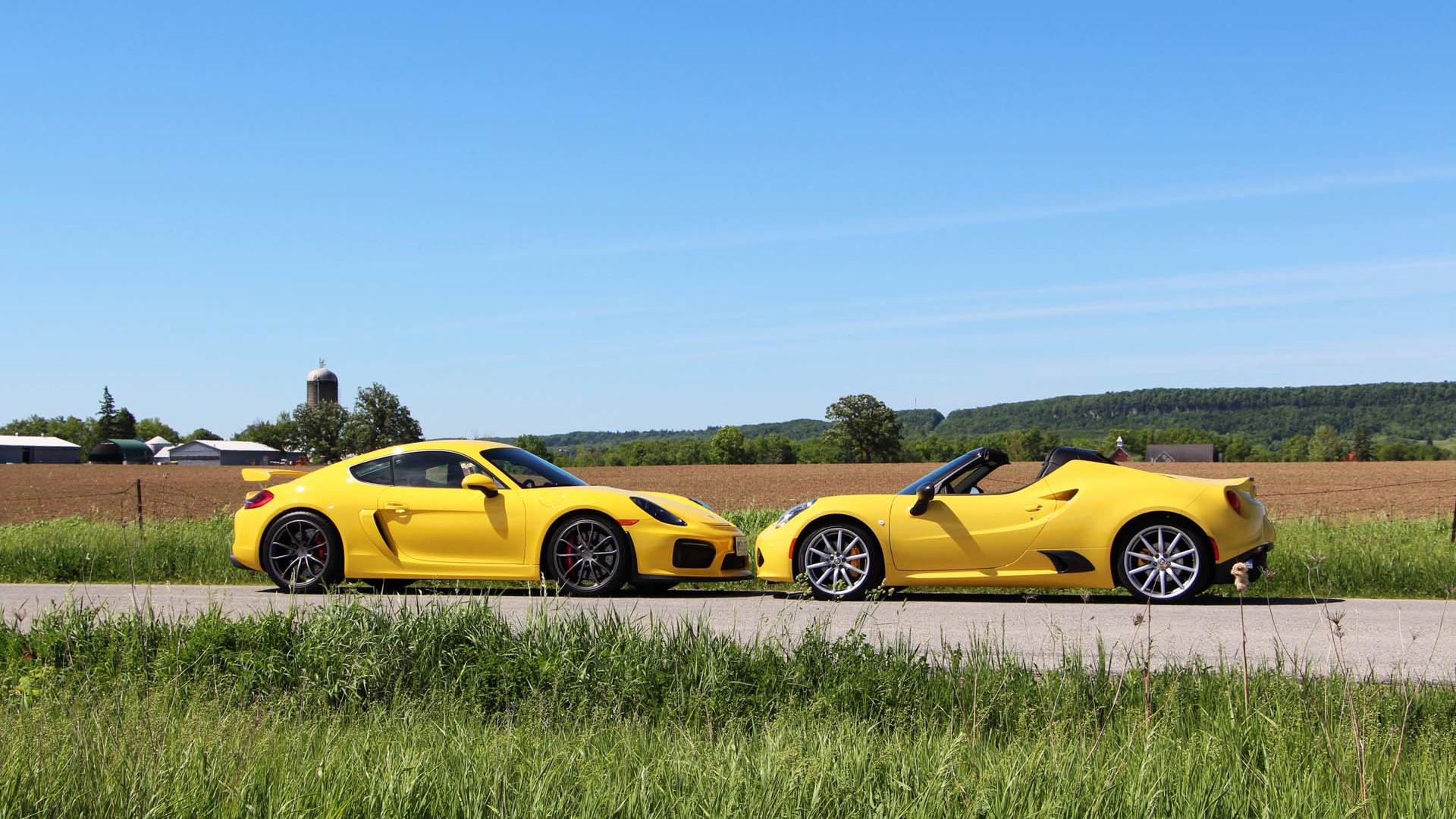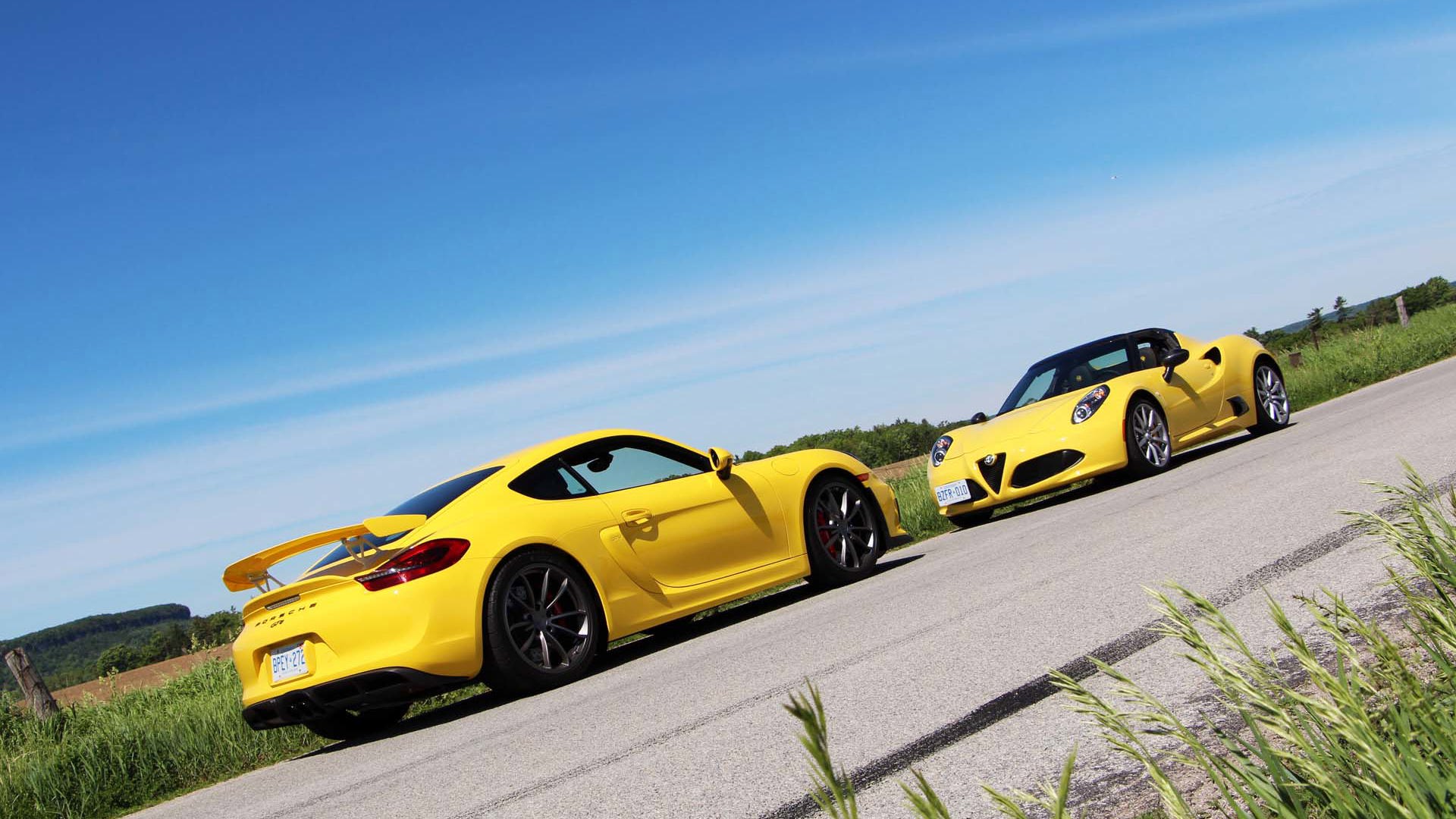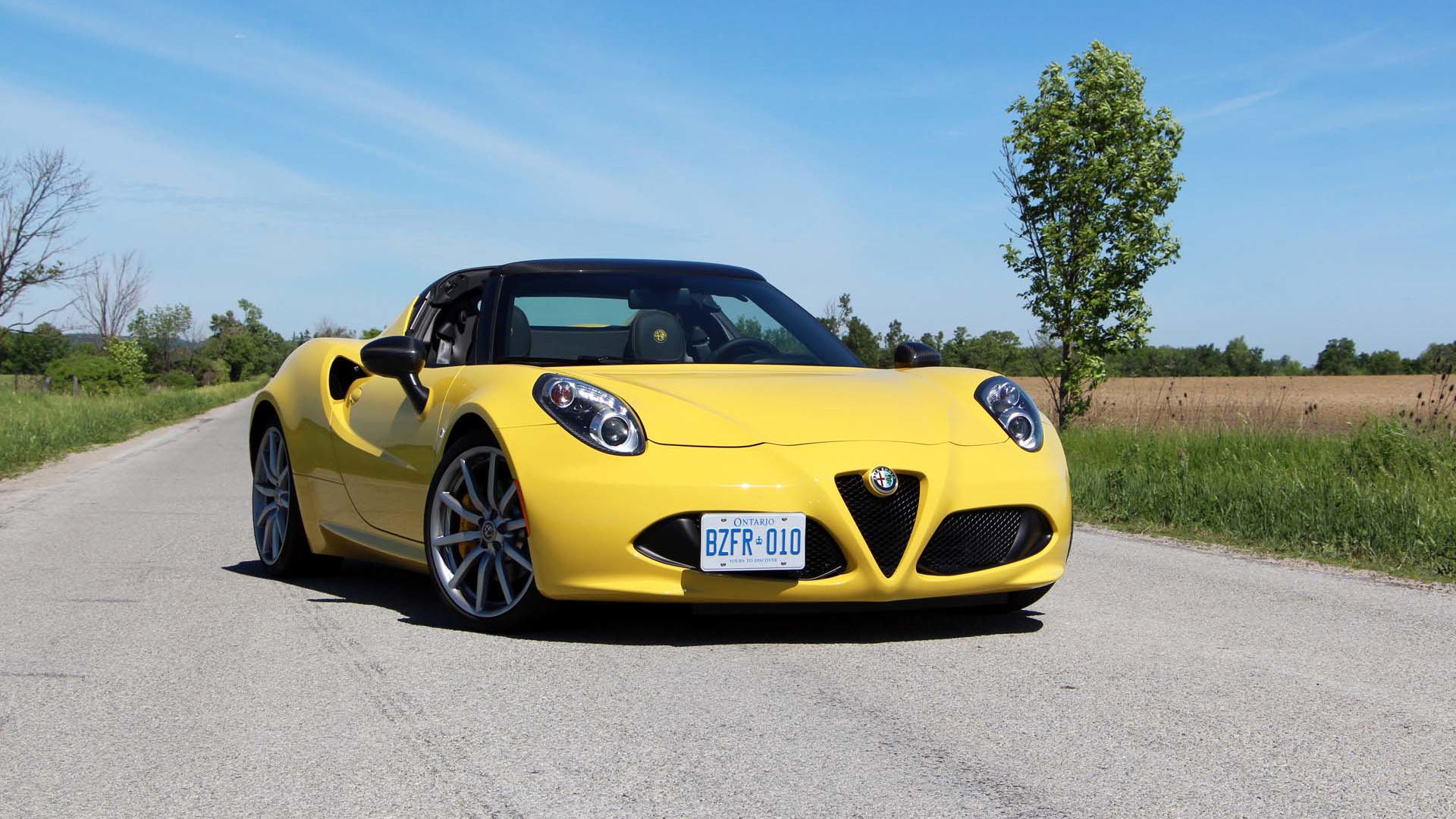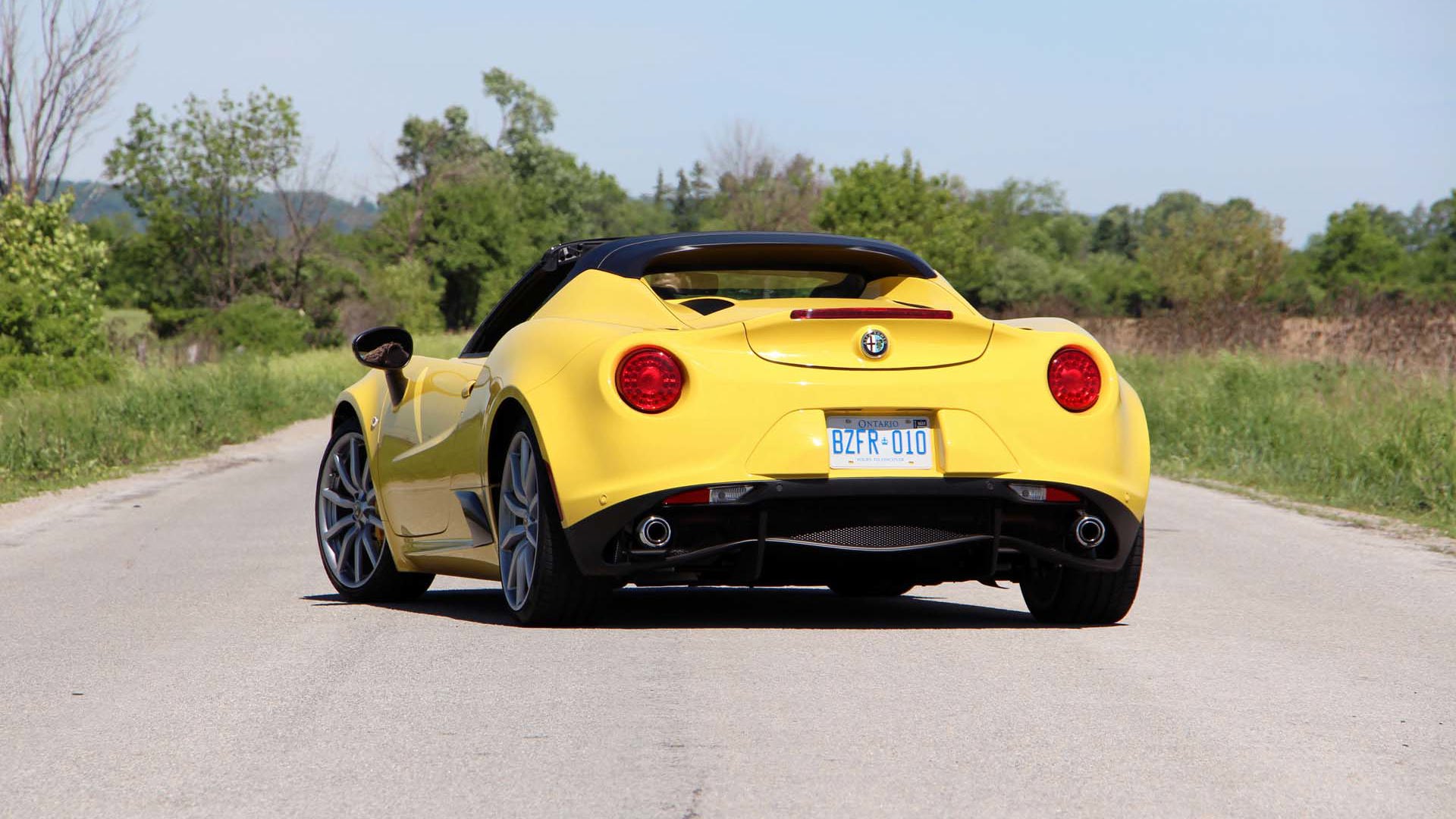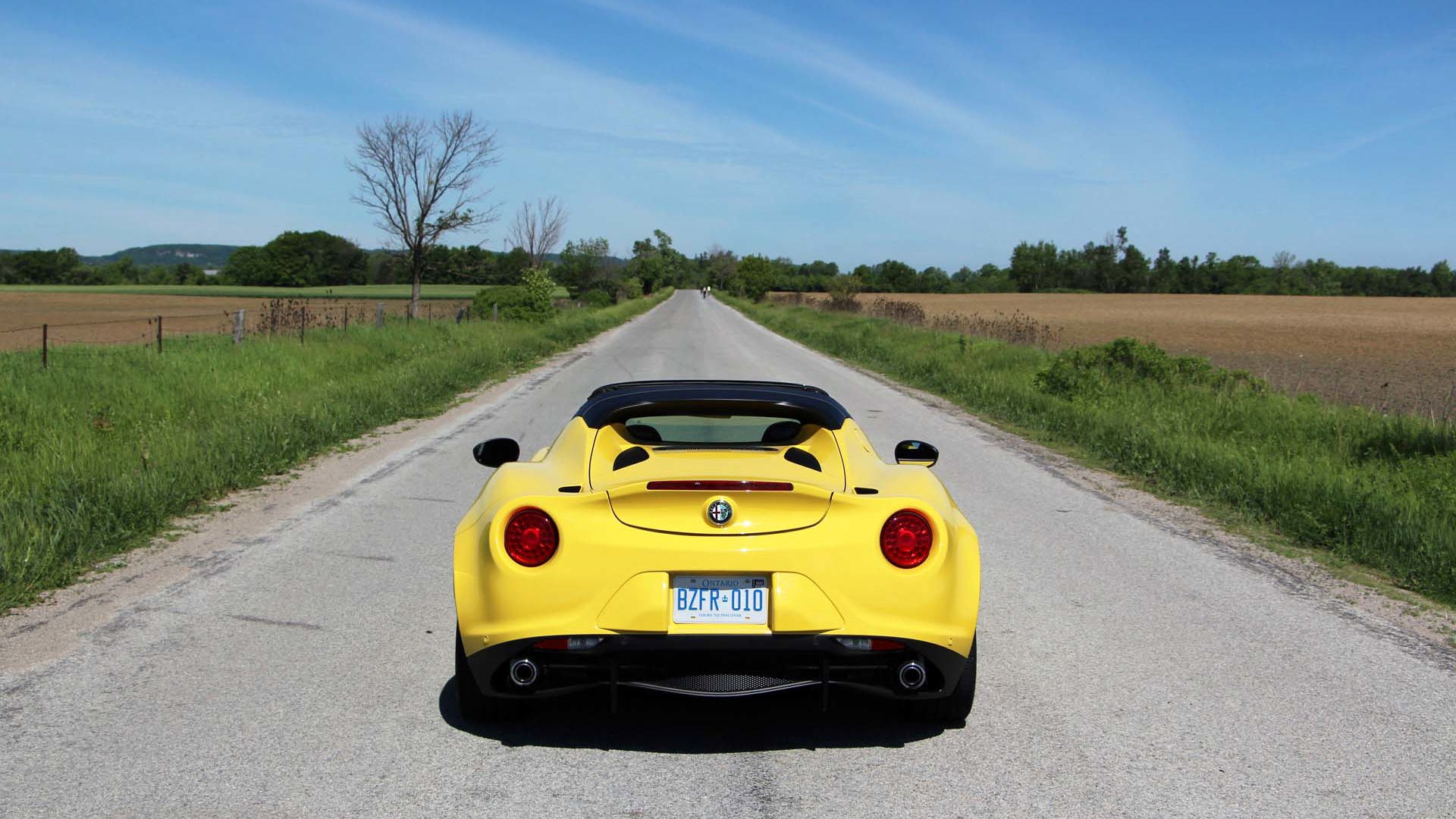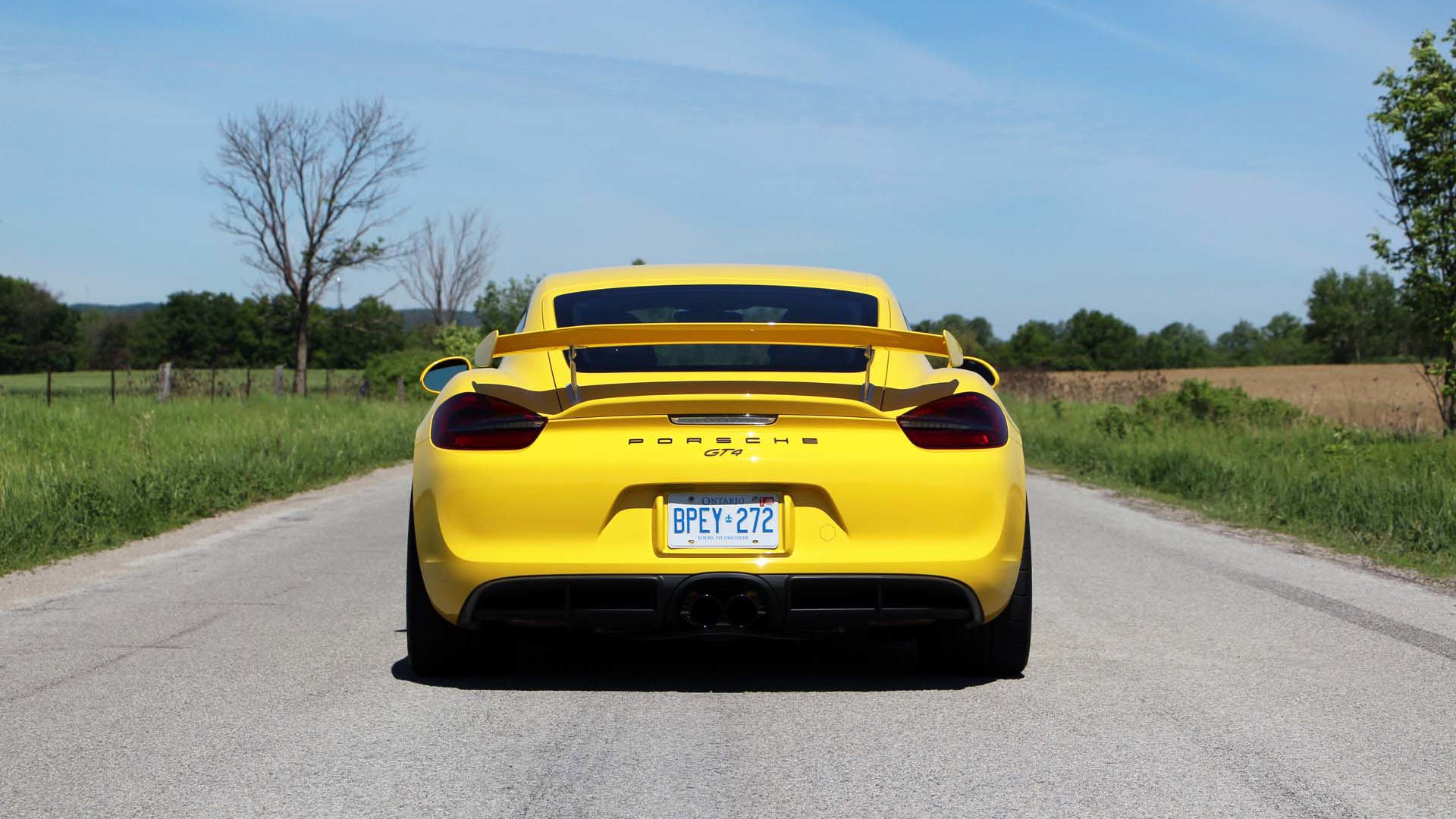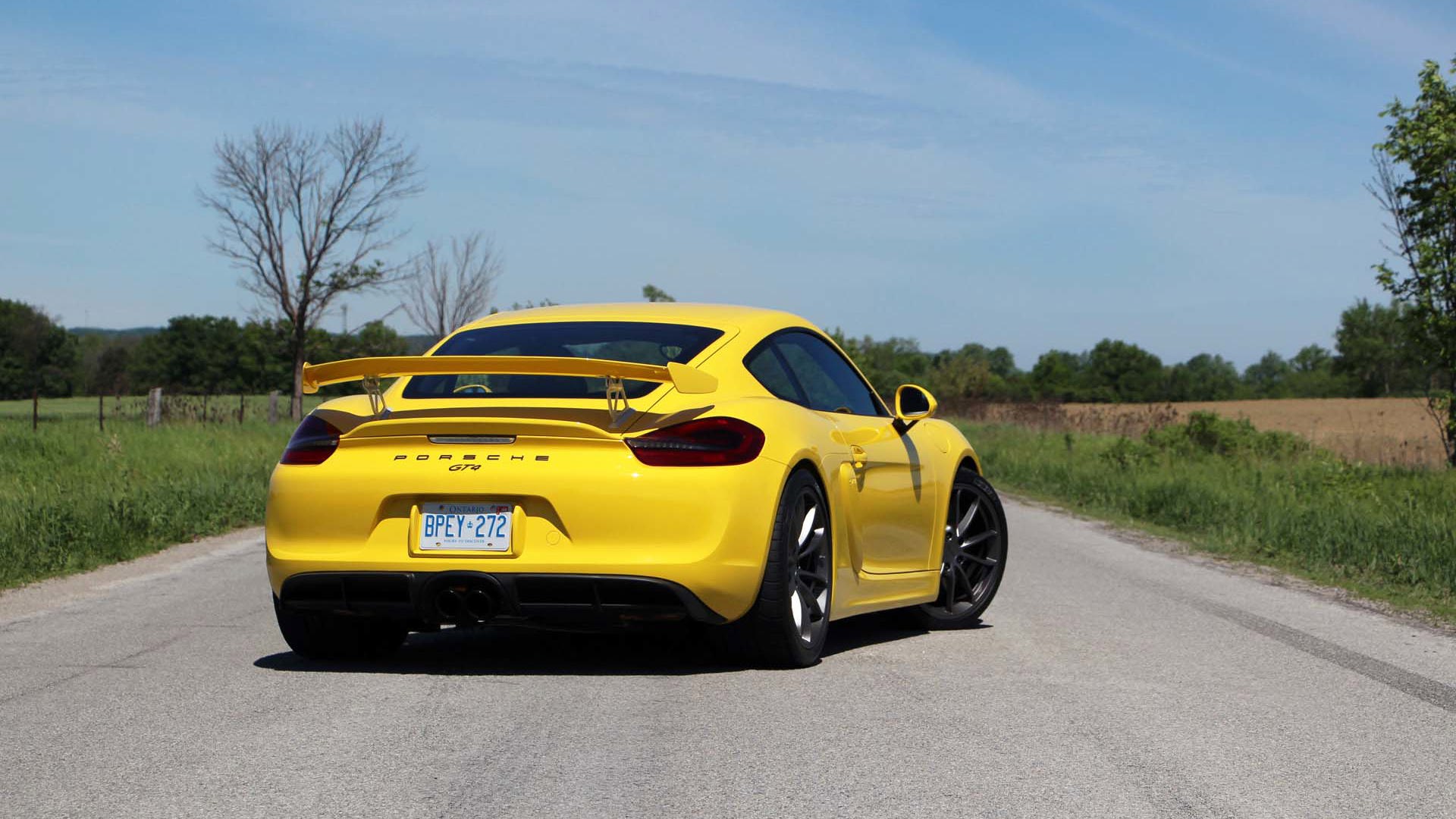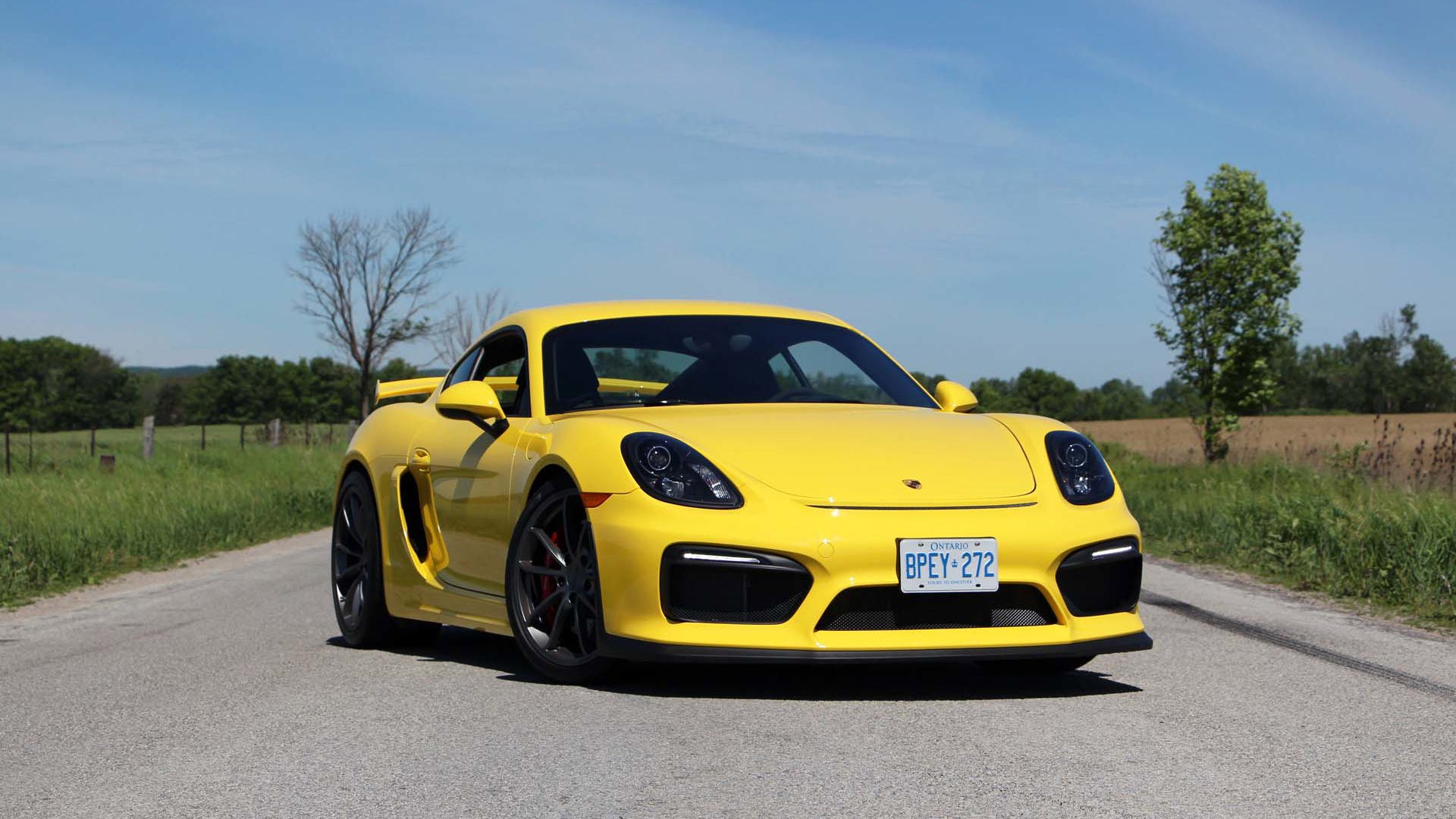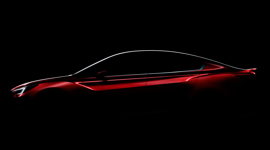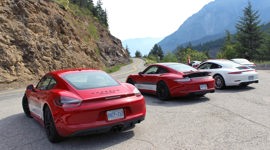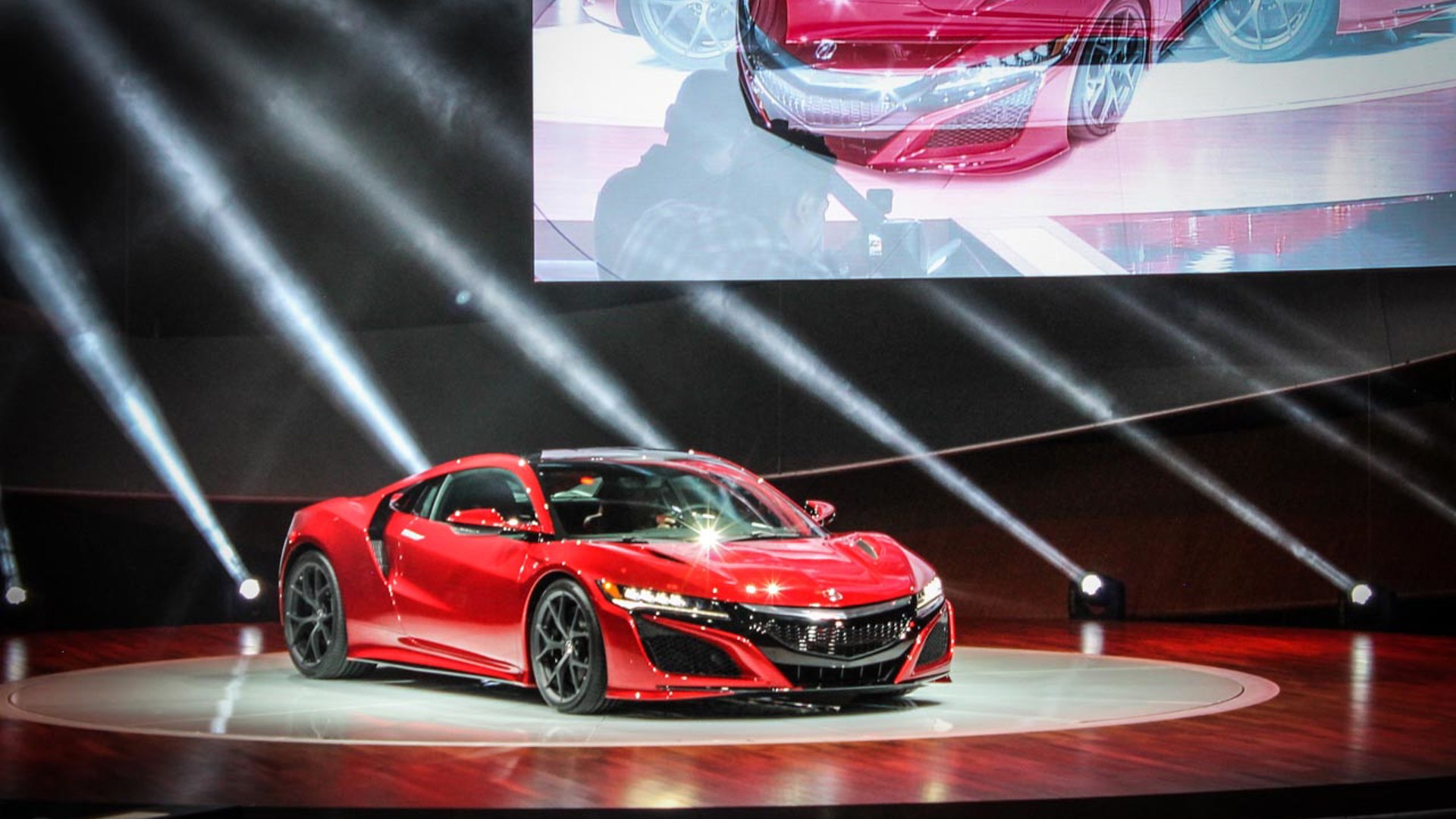Peter Bleakney and Jonathan Yarkony
There’s nothing mellow about these yellows. Priced within five grand of each other, this pair of rare mid-engine sports cars go about the business of providing high-strung automotive thrills in markedly different ways. Well, one is German and the other Italian, after all. Here’s a look at the 2016 Porsche Cayman GT4 and Alfa Romeo 4C Spider.
6 Cylinders vs 4 Cylinders + 1 Turbo
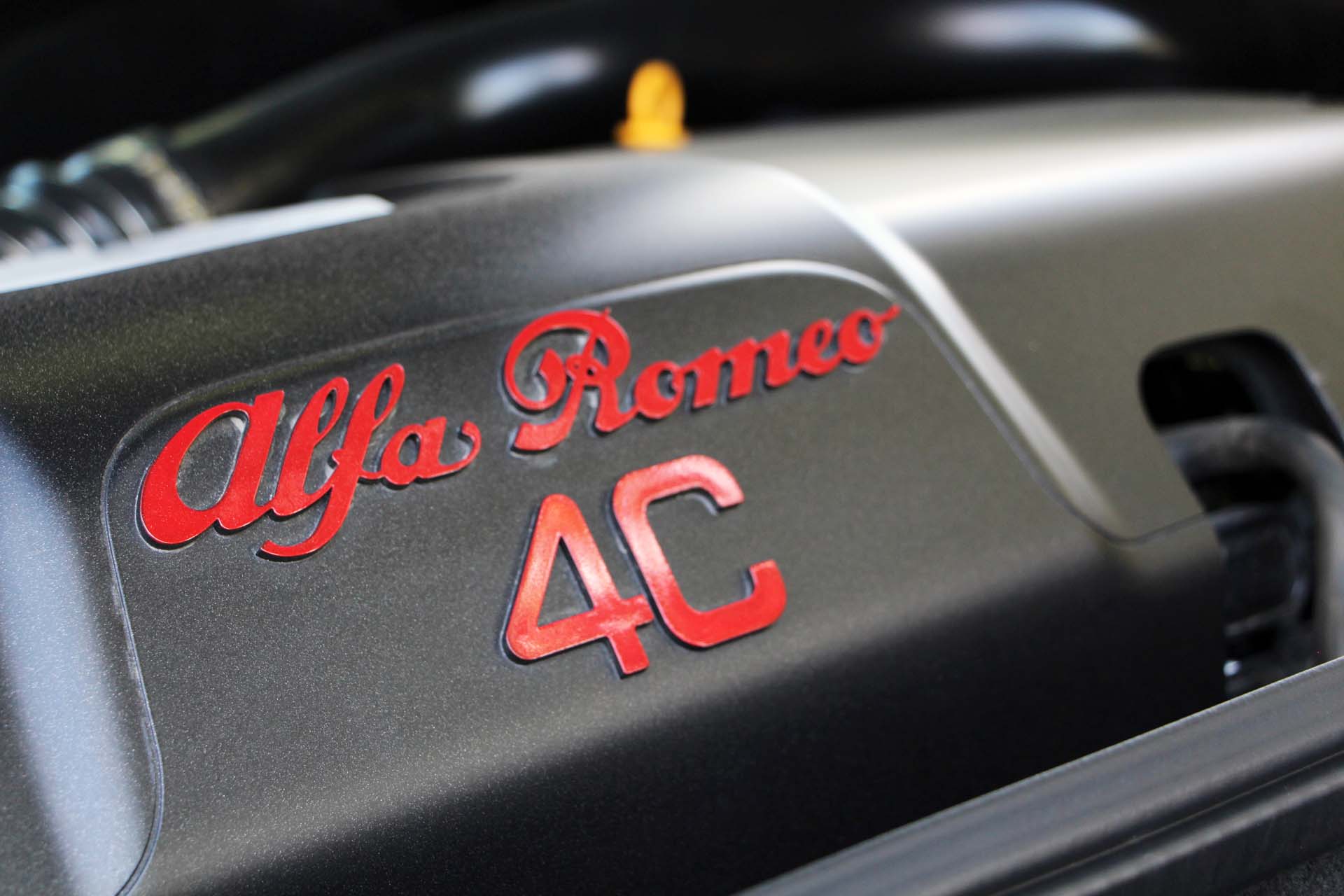
It’s a story of contrasts under the rear decks of these two. The Cayman GT4 snags the 3.8-litre naturally aspirated flat-six from last year’s 911 Carrera S, while the little Alfa is catapulted down the road by a 1.7-litre turbocharged four that barks like a wild dog and makes the most spectacularly rude noises on upshifts. FCA president Sergio Marchionne termed this scrappy four a “wop engine”.
Not to say the GT4 is polite. With Sport Exhaust activated, this unit exhibits the feral wail of all great Porsche flat-sixes as the tach needle swings to the right. This is the call that brings Porschephiles to their knees.
385 vs 237 Horsepower

The Porsche 3.8-litre flat-six makes 385 hp at 7,400 rpm and 310 lb-ft at 4,750. Power delivery is smooth, but things really start happening above 4,000 rpm. That’s when the GT4 asserts itself as a GT-level Porsche – the noise spitting from the dual rear exhausts is commensurate with the coupe’s startling forward progress.
With 237 horsepower at 6,000 rpm and 258 lb-ft from only 2,200 rpm, the Spider’s grunt shows up early, yet this engine is more than just a torque pump. It has bags of character and a surprisingly long and linear power delivery. It bolts off the line and screams to the redline with equal verve.
6 gears + 1 clutch pedal vs 6 gears + 2 automated clutches
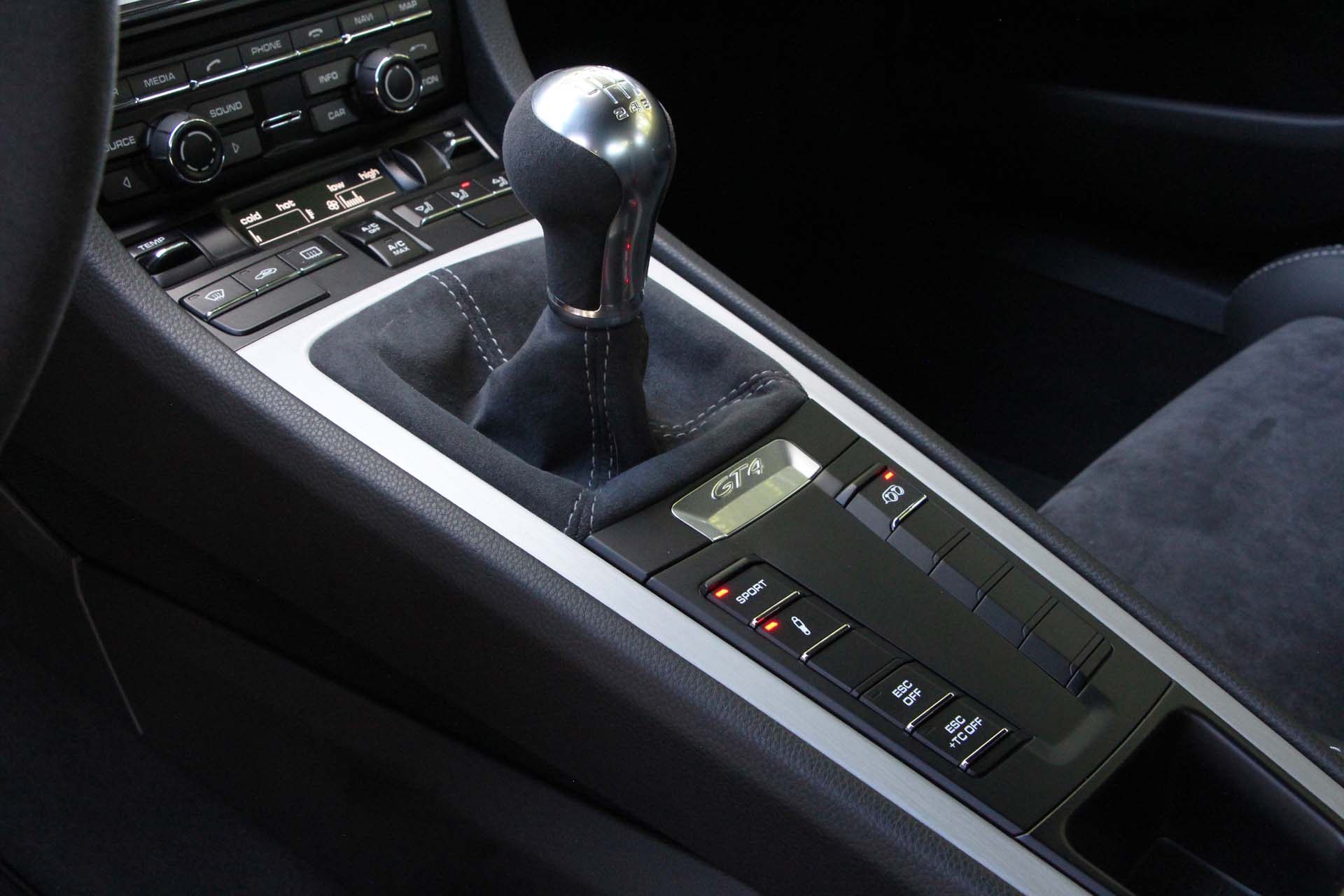
It’s a blessing to enthusiasts that Porsche offers this GT track special with a manual transmission (whereas the 911 GT3 is PDK only), and it’s a trick transmission that features automatic rev-matching on downshifts to go along with its perfectly weighted clutch and firm but well-spaced gates and short-throw shifter. It’s about as good a manual transmission as you can find anywhere these days, with pedals ideally spaced for heel-toe downshifting should you decide to try rev-matching on your own rather than letting the car’s ECU have all the fun itself.
Although the manual transmission will almost always be our first choice (and the GT4’s most definitely is), the 4C has an automated manual that could go toe to tow with Porsche’s top-notch PDK. The Alfa’s transmission has a decidedly odd button mechanism to engage, but once the car is set to Dynamic mode, the shift program is quick and on point, while manual shifts feel lightning quick and help exploit that deep well of torque. On one steep switchback, the Alfa simply walked away from the GT4, able as it was to quickly drop into first and use that torque to power up the climb, while the slower human was unable to shift as quickly and maintain momentum.
4.4 Seconds vs 4.5 Seconds
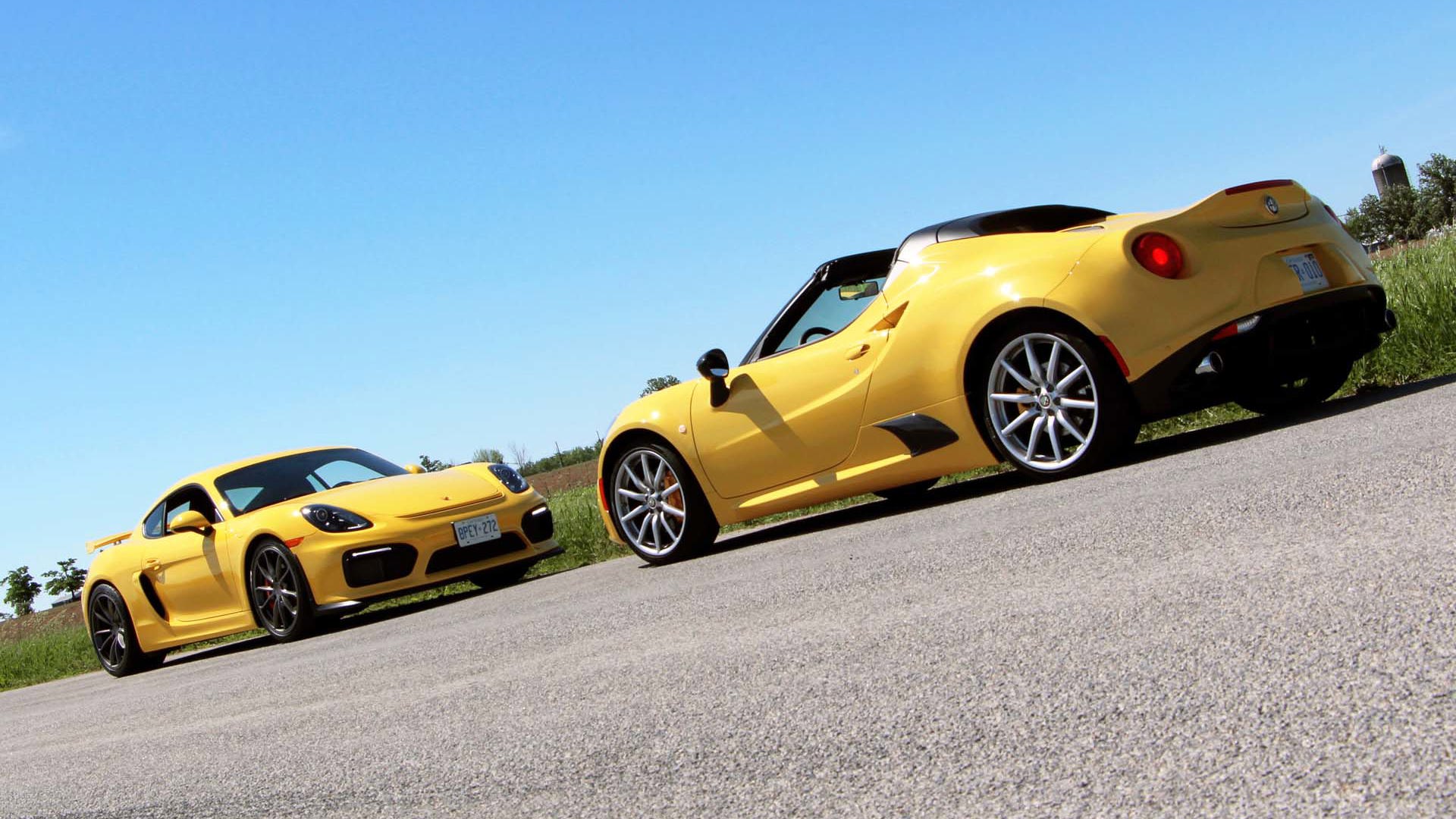
Official factory zero-to-100 km/h times put these semi-exotics neck and neck. And indeed, out on our test loop the two felt equally quick. But different. The Alfa powertrain is a more modern, hi-tech experience with its low-down turbo shove and twin-clutch tranny banging off lightning shifts. In contrast, the Porsche GT4 is wonderfully old school. The non-turbo flat-six needs to sing for its supper and the slick-shifting six-speed manual with auto-rev matching requires real human interaction. Had Porsche fitted the GT4 with its 7-speed twin-clutch PDK the car would certainly have been quicker. But better? Don’t think so.
1340 kg vs 1,128 kg

Weight is the great equalizer. Thanks to the Alfa Romeo 4C Spider’s exotic carbon-fibre monocoque structure, it is a relative featherweight compared to the Porsche GT4 with its traditional steel bones and body. Still, the GT4 makes some concession to weight loss. They’ll delete the radio and air conditioning for free (gee, thanks) and the fabric strap door pulls save a couple of grams.
The Alfa’s power-to-weight ratio is 4.7 kg/hp while the GT4 brags a better 3.5 kg/hp. Then why are they so close in acceleration times? Credit the Italian’s super-fast dual-clutch tranny and low down torque.
20 inches vs 18/19 inches
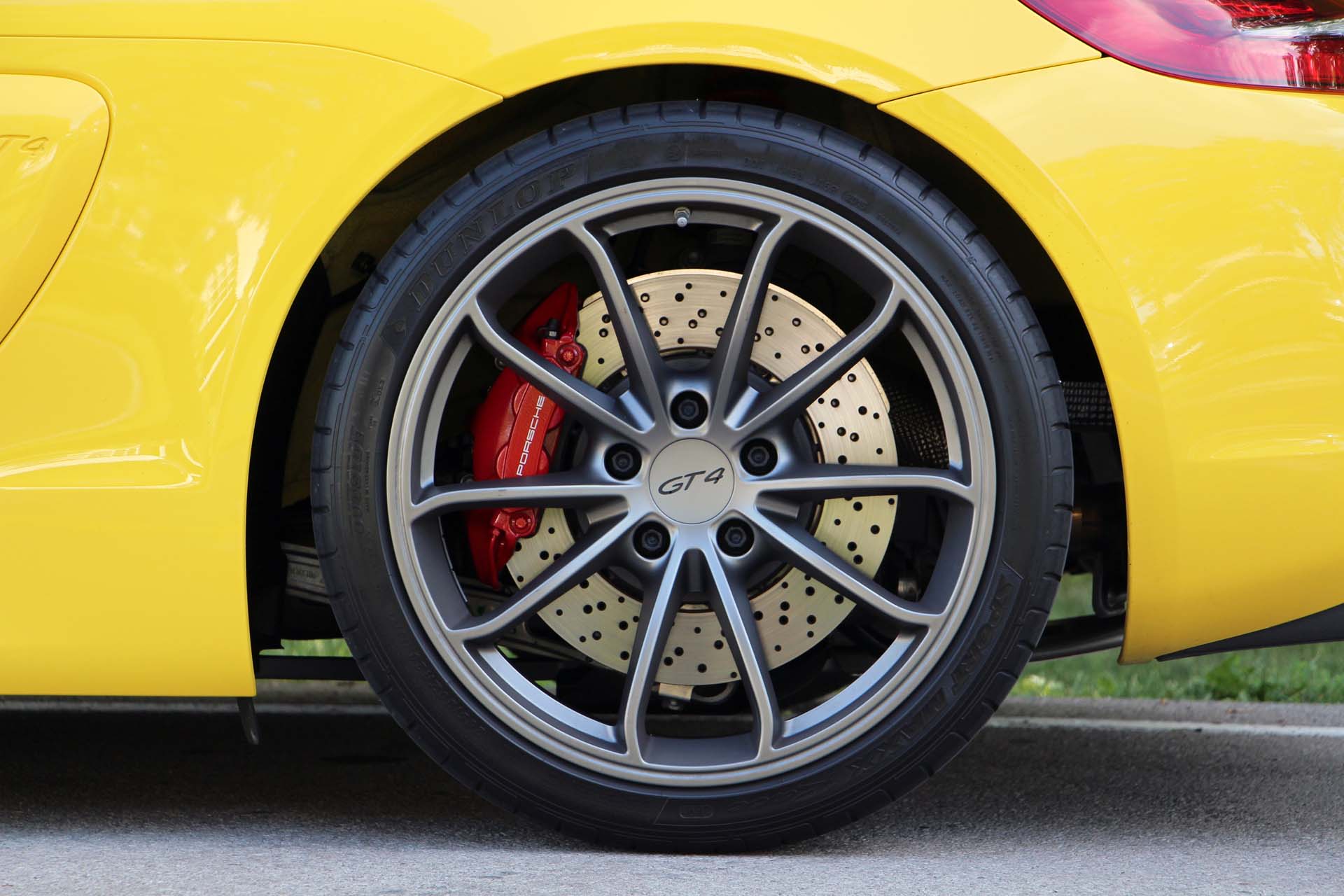
The Cayman GT4 is well tired, with 20-inch gunmetal alloys (11 inches wide in back, 8.5 in front) dressed in Dunlop Sport Maxx Race tires (245/35ZR20 front and 295/30ZR20 in back), giving the GT4 massive grip in the corners, but somehow avoiding the kind of harsh ride you’d expect from such large, low-profile tires. Compared to the Cayman’s track tires, the Alfa’s Pirelli P Zeros seem rather ordinary, with plenty of grip compared to most cars, but giving up quite an edge to the GT4. The Alfa’s wheels are 19 inches at the rear, with 235/35ZR19 tires and the fronts are 18 inches with 205/40ZR18 rubber.
1.5 g vs 1.1 g
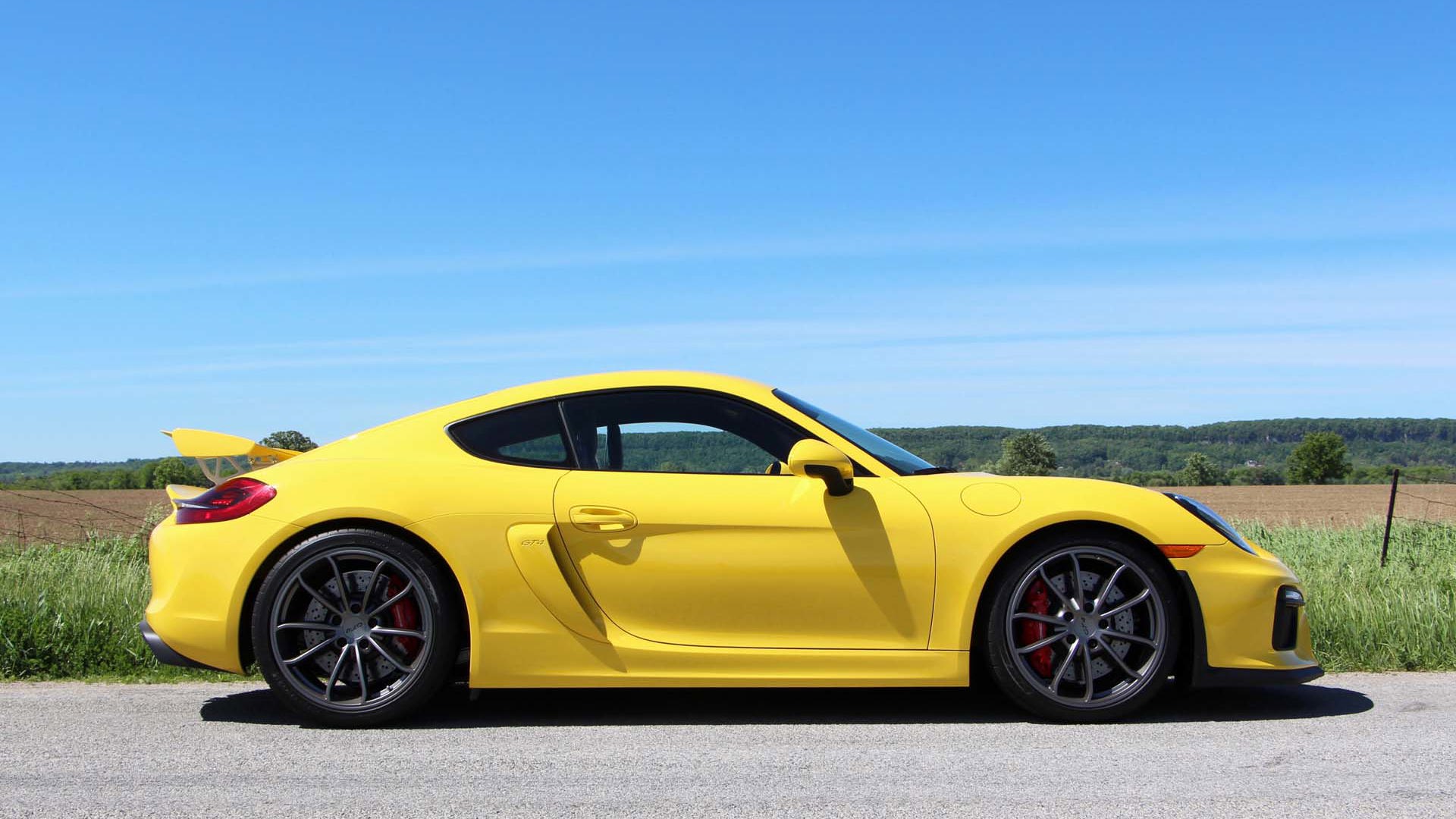
Thanks in large part to that Dunlop tire option, ultimate lateral grip for the Porsche is pegged at 1.5 g while the Alfa is a slightly more modest, yet still face distorting 1.1 g. Make no mistake, these cars hang on like pit bulls on a Postie. While hammering over these rural roads, the 4C Spider was less inclined to wag its tail, showing a more neutral position, while the GT4 was open to a little oversteering fun when provoked.
31–36 cm wide x 13.5 cm tall vs 25–31 cm wide x 8.5 cm tall
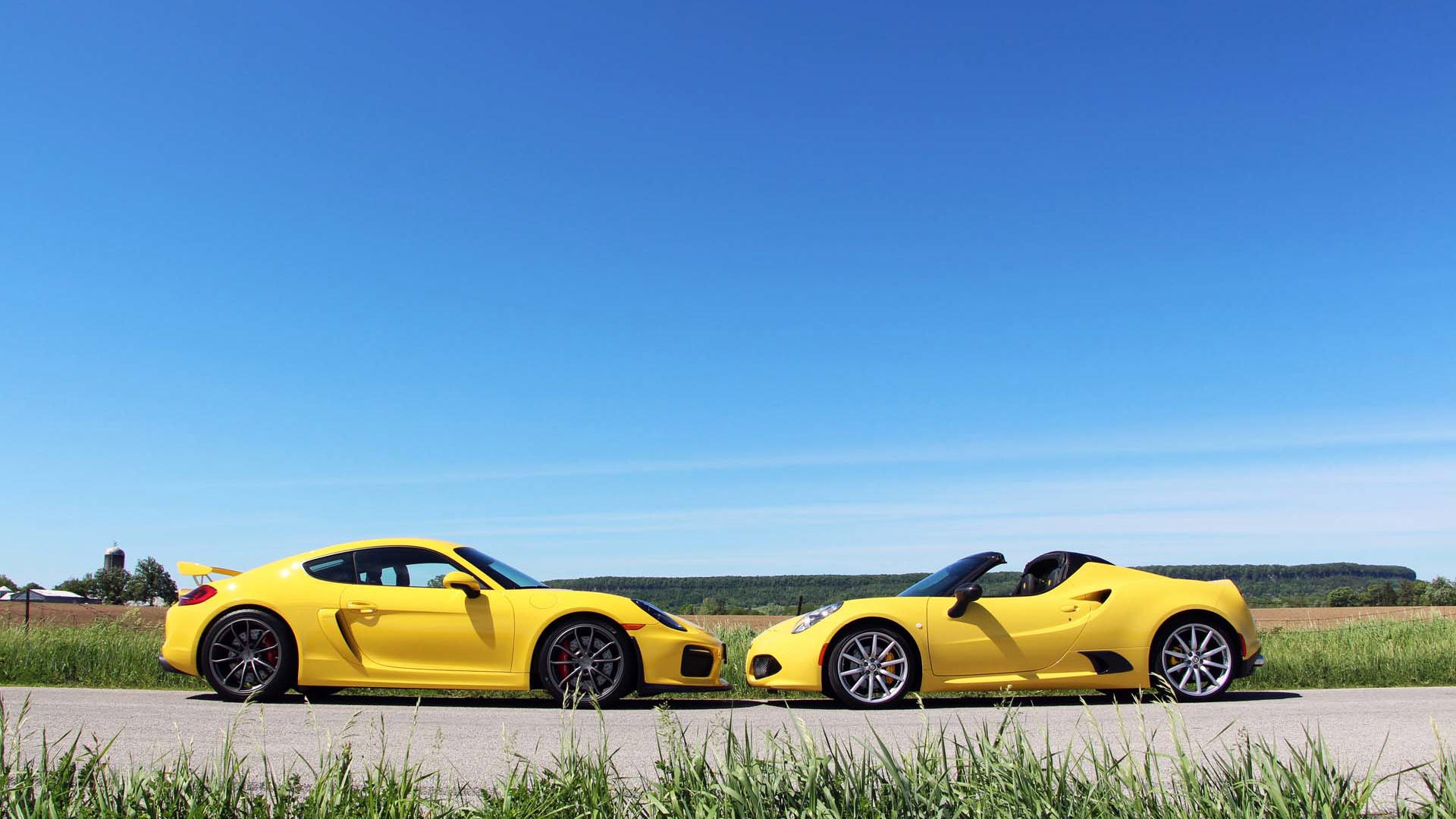
Any performance driver knows that seats are crucial for being able to drive aggressively, and both these sports cars have gorgeous sport seats that will make for many happy backsides. However, I found the Alfa’s seats far too narrow in the seat bottom, and with far less bolstering for the thighs and torso than the Cayman GT4’s carbon-fibre-shelled racing seats. I found myself pinched and sitting on top of the thigh bolsters rather than being hugged between them, which was both uncomfortable and less secure.
To confirm our suspicions, we broke out the measuring tape. The GT4 measured 31 cm wide at the rear of the bottom cushion, widening to 36 cm at the mid-thigh, with a height of over 13 cm to the bolsters. Meanwhile, the 4C’s buckets were 25 cm at their narrowest, widening to 31 cm in the mid-thigh, with only 8 cm of bolstering. The GT4 is, of course, the track-spec model, so it is not surprising that it is the more aggressive of the two, but wider-bottomed drivers (like yours truly) will definitely appreciate the extra hip room in the GT4.
11.2m vs 12.1m
Turning circle might not be a big issue at speed but it sure does make it hard to hit the marks in your pit bay! At 12.1 m the Alfa Romeo's turning circle is truly immense, almost a full metre wide in diameter than that of the Porsche.
Further exacerbating the large turning circle is the manual steering of the 4C. Now don't get us wrong - manual steering is a rare joy and we were immensely grateful to see it implemented here. Our forearms though? Not so much.
Also, because the Alfa is a tightly governed automatic you can't simply flick-spin the thing around when it's time to perform a u-turn, while you can in the manual, nanny-free Porsche.
